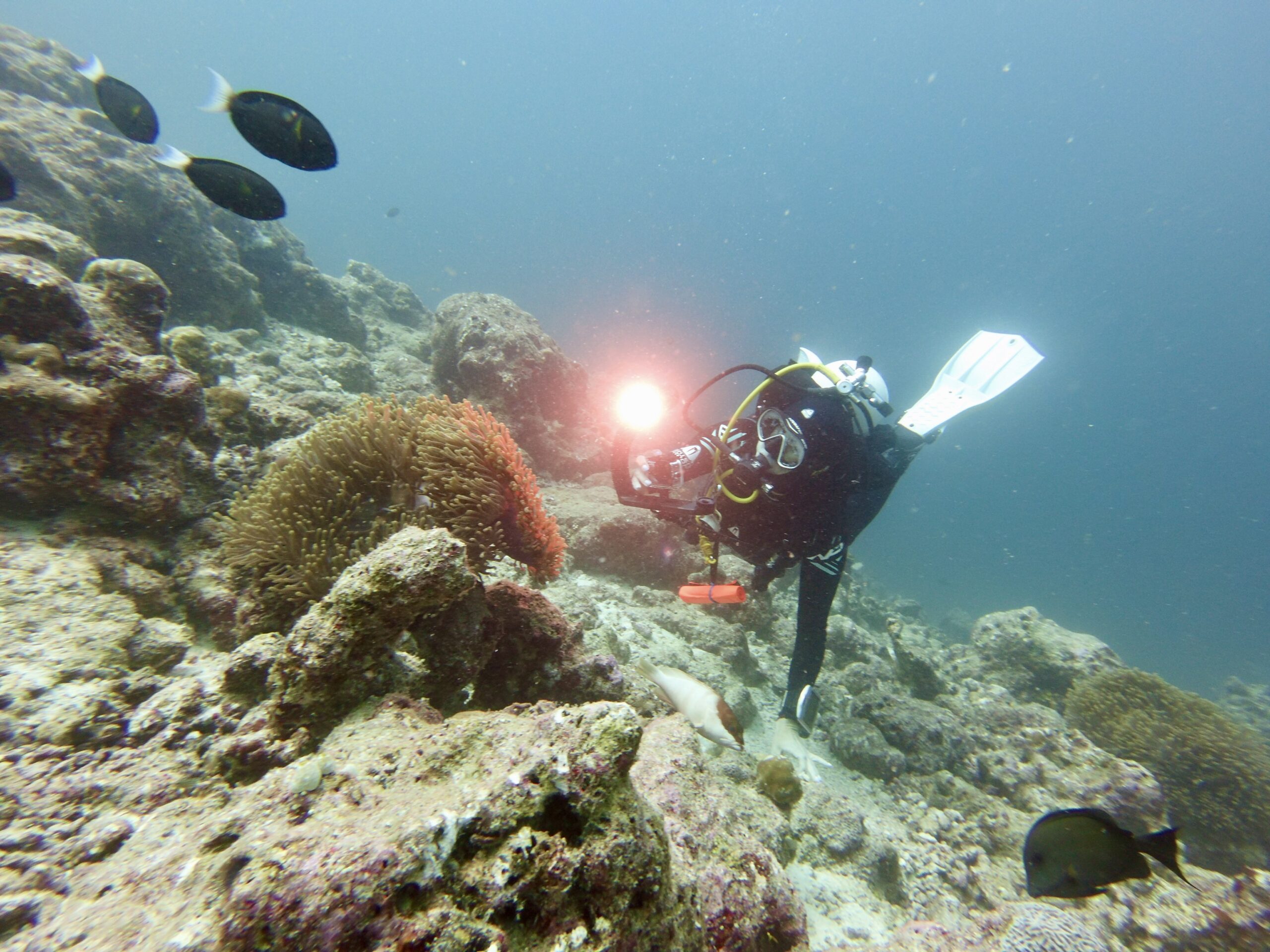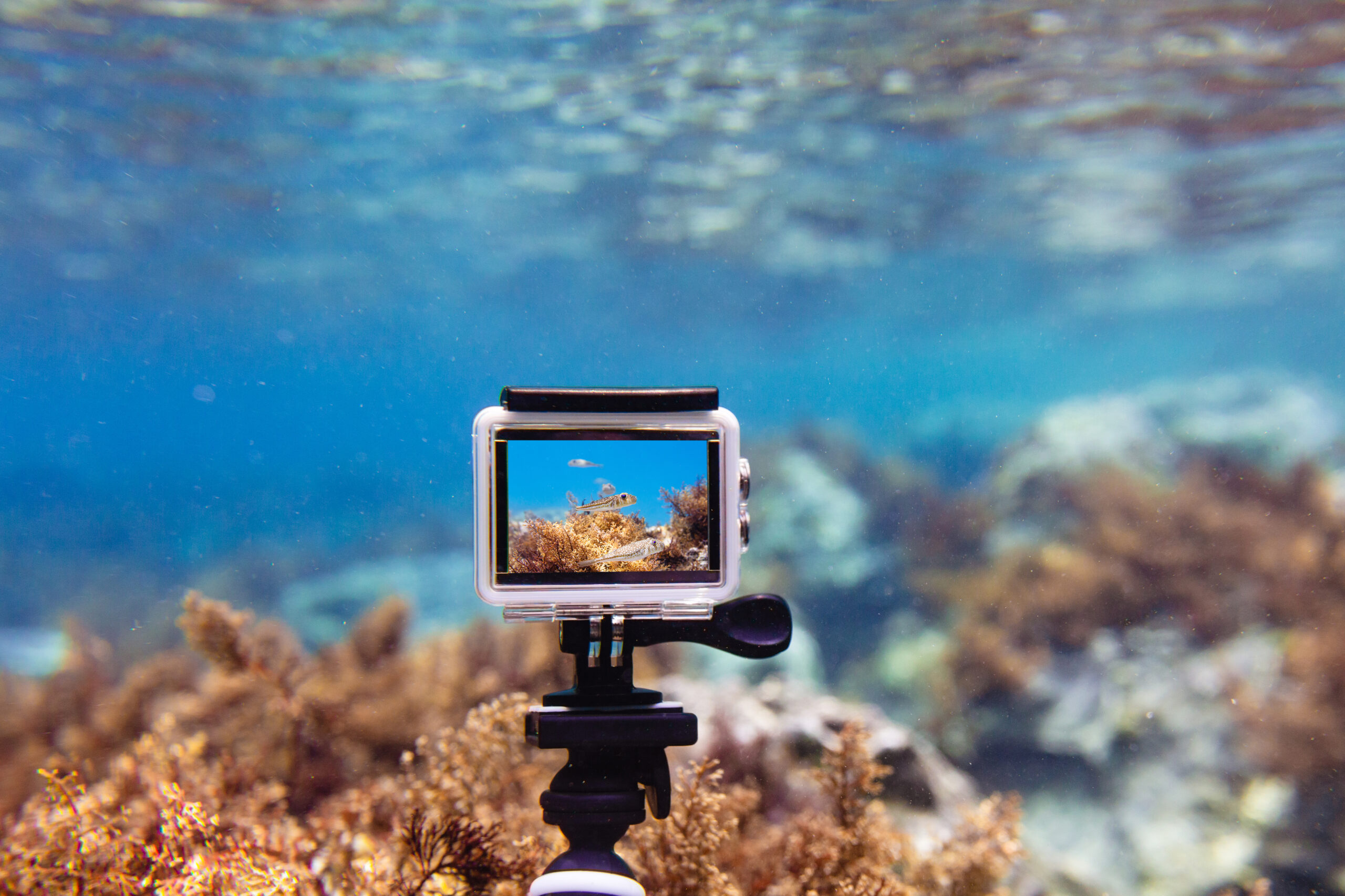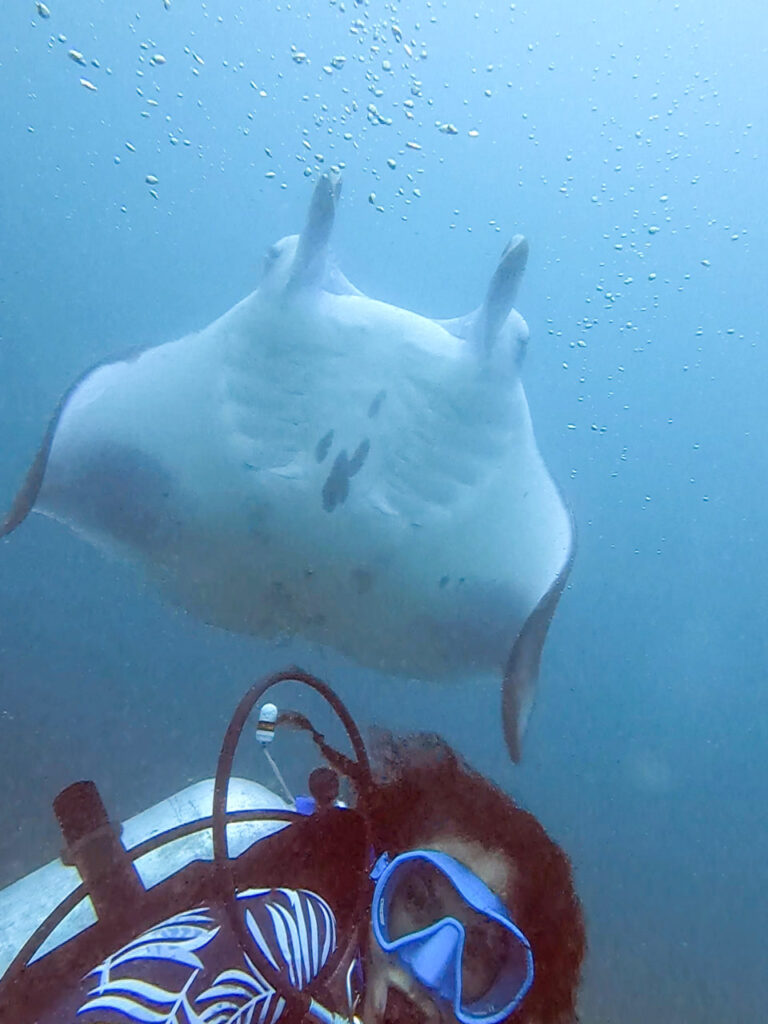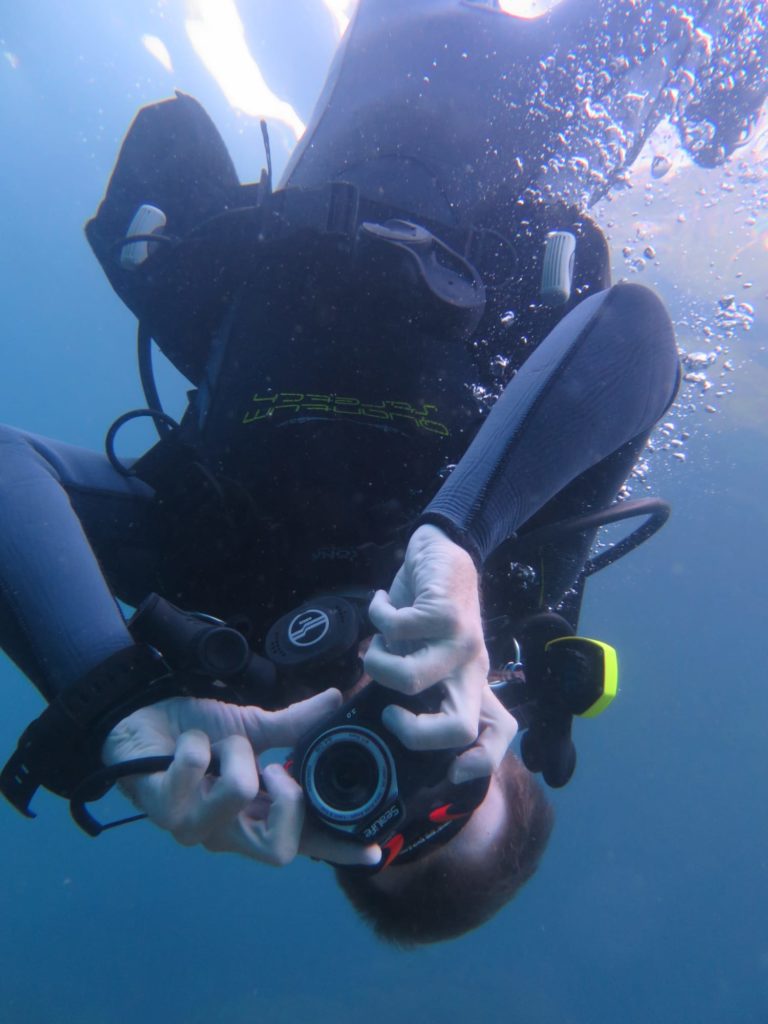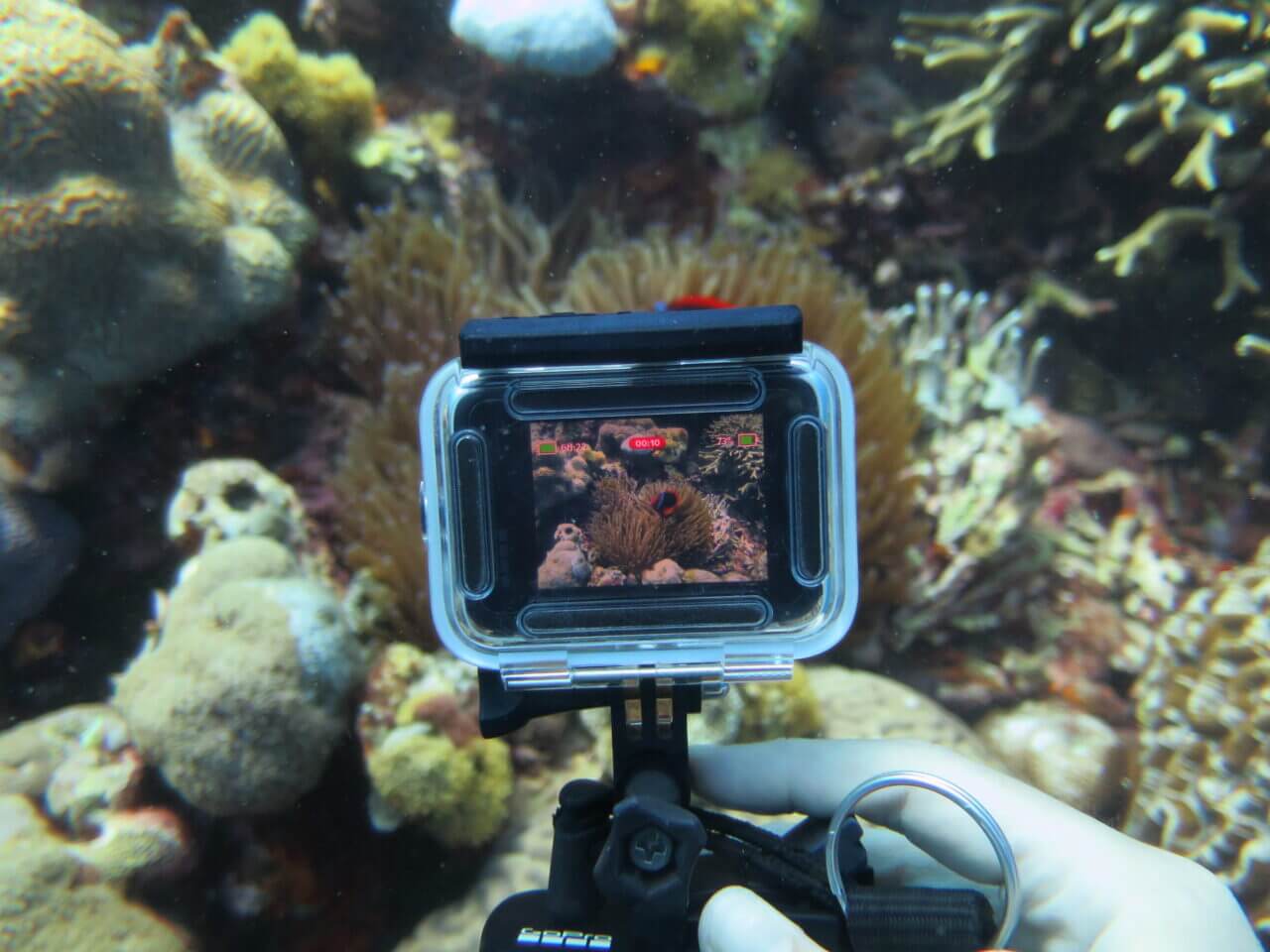
If you’re eager to record your diving adventures but unsure which is the best underwater camera for you…you’ve come to the right place!
At Diving Squad; we’re totally obsessed with filming and photographing our scuba diving missions and we use a variety of different waterproof cameras to do so.
Some are awesome for taking underwater photographs, others excel at shooting videos whilst yet others are designed for macro (tiny) subjects like nudibranch and shrimp!
We’ve reviewed the very best dive cameras of 2025. Dive down to the QUICK ANSWER for a brief synopsis of each one or descend deeper for our Detailed Reviews.
These reviews were created based off our own experience using underwater cameras to create content for Diving Squad. We’ve considered camera cost, underwater settings, user-interface, video definition, photo quality and more.
The cheapest underwater cameras are action cameras which can be taken underwater in low-cost waterproof housing – they’re super affordable but a little basic.
A step up the ladder are mid-priced “dive cameras” which incorporate special features like underwater colour correction; whilst still being easy to use and super compact.
For these mid-priced cameras, there’s a bunch of accessories available like special lenses and underwater lights.
Then you have DSLR’s and mirrorless cameras which take the highest quality photos and videos but which are expensive and often complicated to operate as well as fiddly to dive with.
These more expensive cameras must be placed in special underwater housing, which is purchased separately and like the cameras themselves, is very pricey.
With all that in mind, let’s take a closer look…
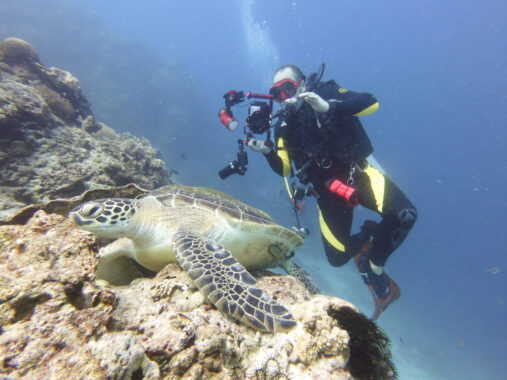
QUICK LOOK – Best Dive Cameras:
Cheap & Mid-Priced:
- TOP PICK : Best All-Rounder for Newbies: Sealife Micro 3.0
- Best Underwater Macro Camera: Olympus Tough TG7
- Best Underwater Action Camera: GoPro Hero 11
- Best Underwater Video Camera: DJI Osmo Action 4
- Best Photo Quality: Canon Powershot G7X III
- Cheapest Underwater Camera: Akaso EK700
- Best UW Housing for SmartPhone: Sealife SportDiver
Expensive:
- Best Point & Shoot Camera for Divers: Panasonic LX100 II
- Best Mirrorless Camera for Divers: Sony Alpha A6600
- Best DSLR Camera for Divers: Nikon D780
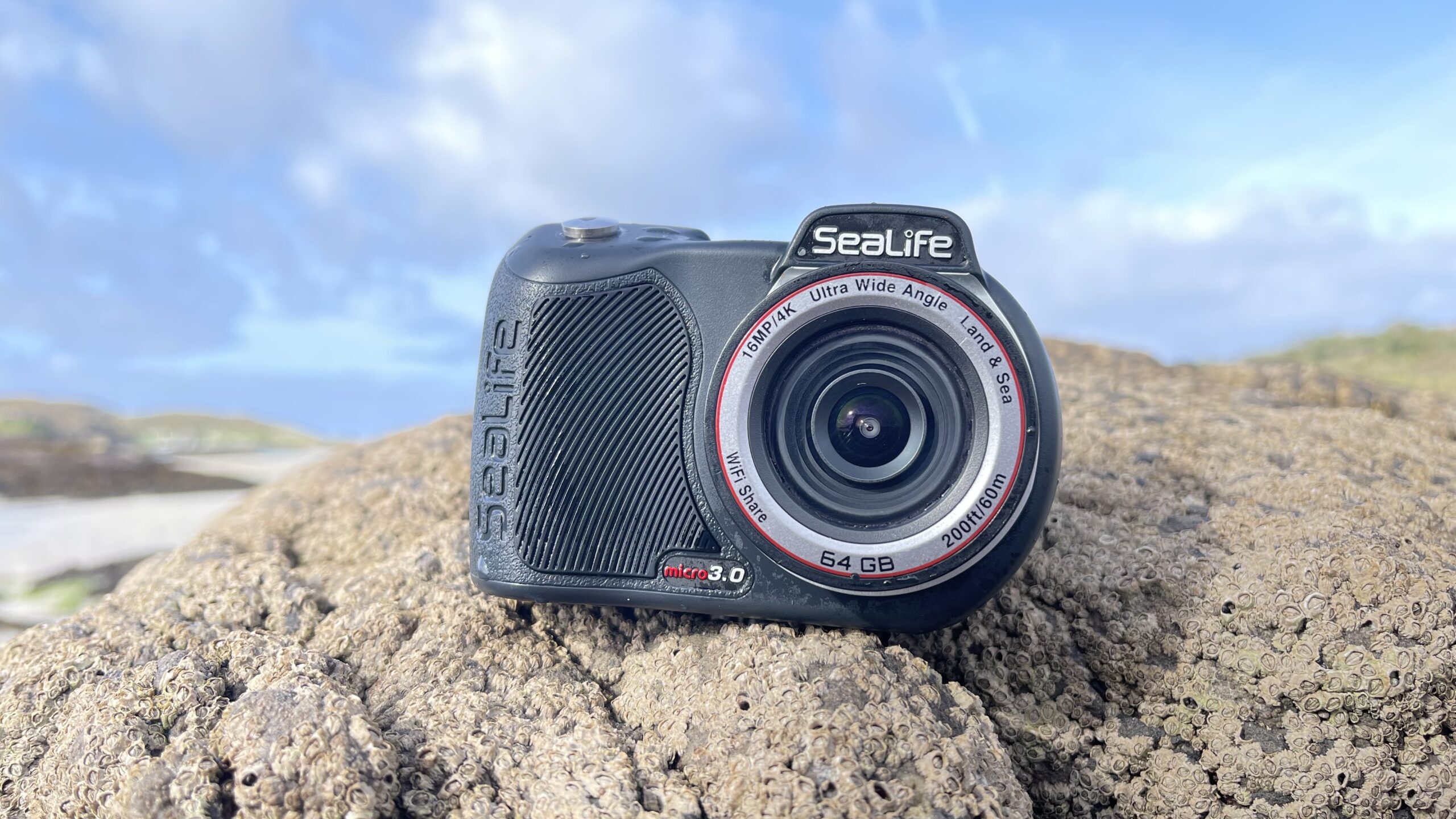
1) TOP PICK: Sealife Micro 3.0
Price: > $$
Very Good Underwater Videos & Photos
Underwater Colour Correction
Easy to Use
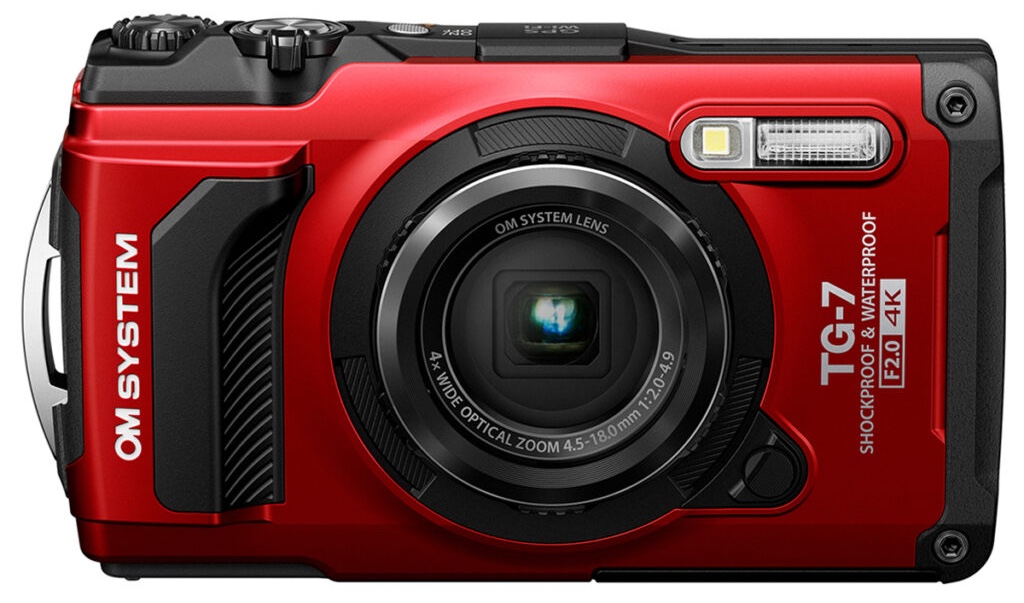
2) Best Underwater Macro Camera: Olympus Tough TG7
Price: > $$
Microscope Mode & Optical Zoom
Superb for Tiny Creatures:
Also Works for Bigger Subjects

3) Best Underwater Action Camera: GoPro Hero 11
Price: > $$
5.3K / 60fps Video
HyperSmooth 5.0 Video Stabilization
Extremely compact
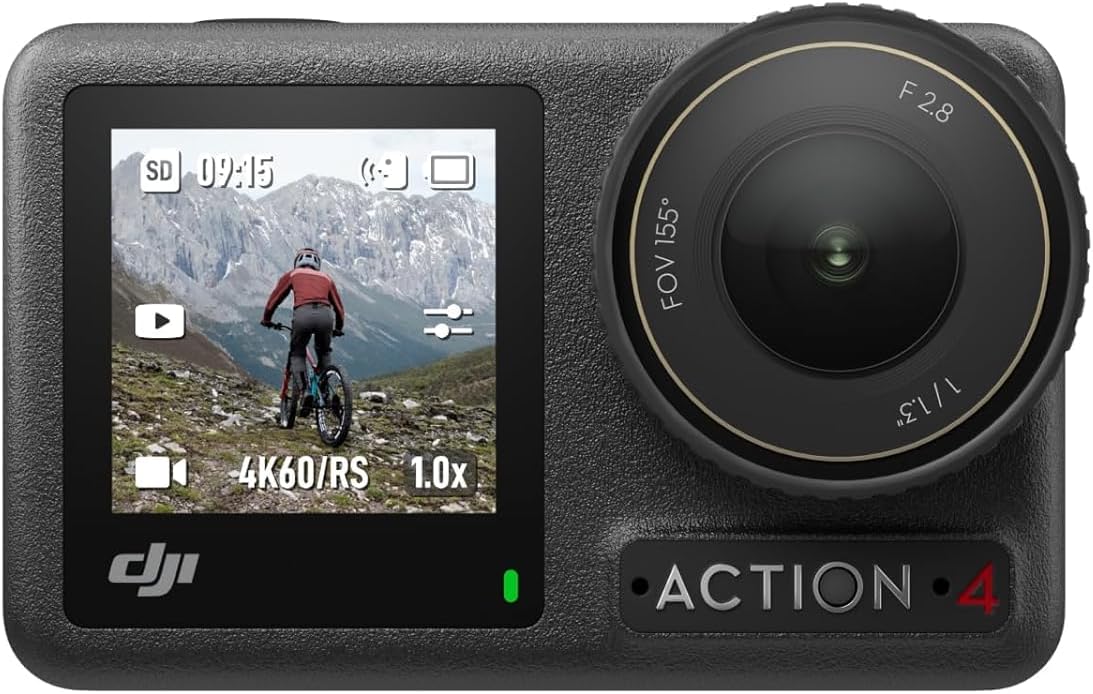
4) Best Underwater Video Camera: DJI Osmo Action 4
Price: > $
4K / 120 fps Videos
Automatic White Balance Adjustment
Vivid Underwater Video Setting
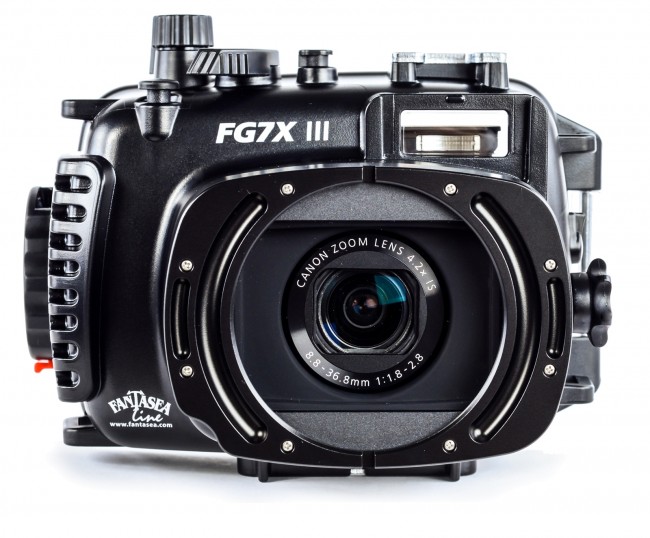
5) Best Underwater Photo Camera: Canon Powershot G7X III
Price: > $$
Superb Underwater Photos
Highly Adjustable Settings
2 X Optical Zoom
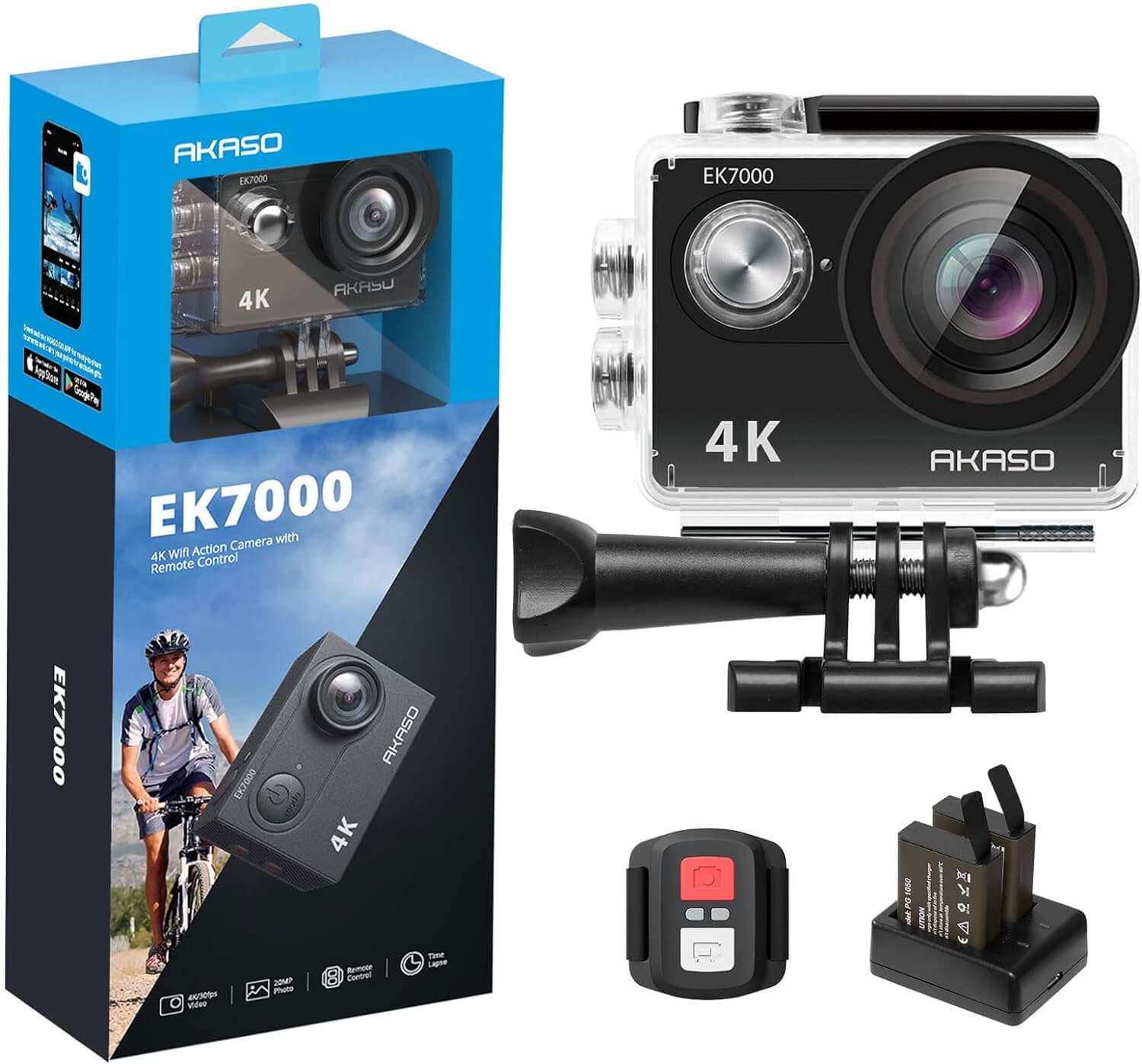
6) Cheapest Underwater Camera: Akaso EK7000
Price: > $
Decent Photos & Videos
Easy to Use
Includes Underwater Housing
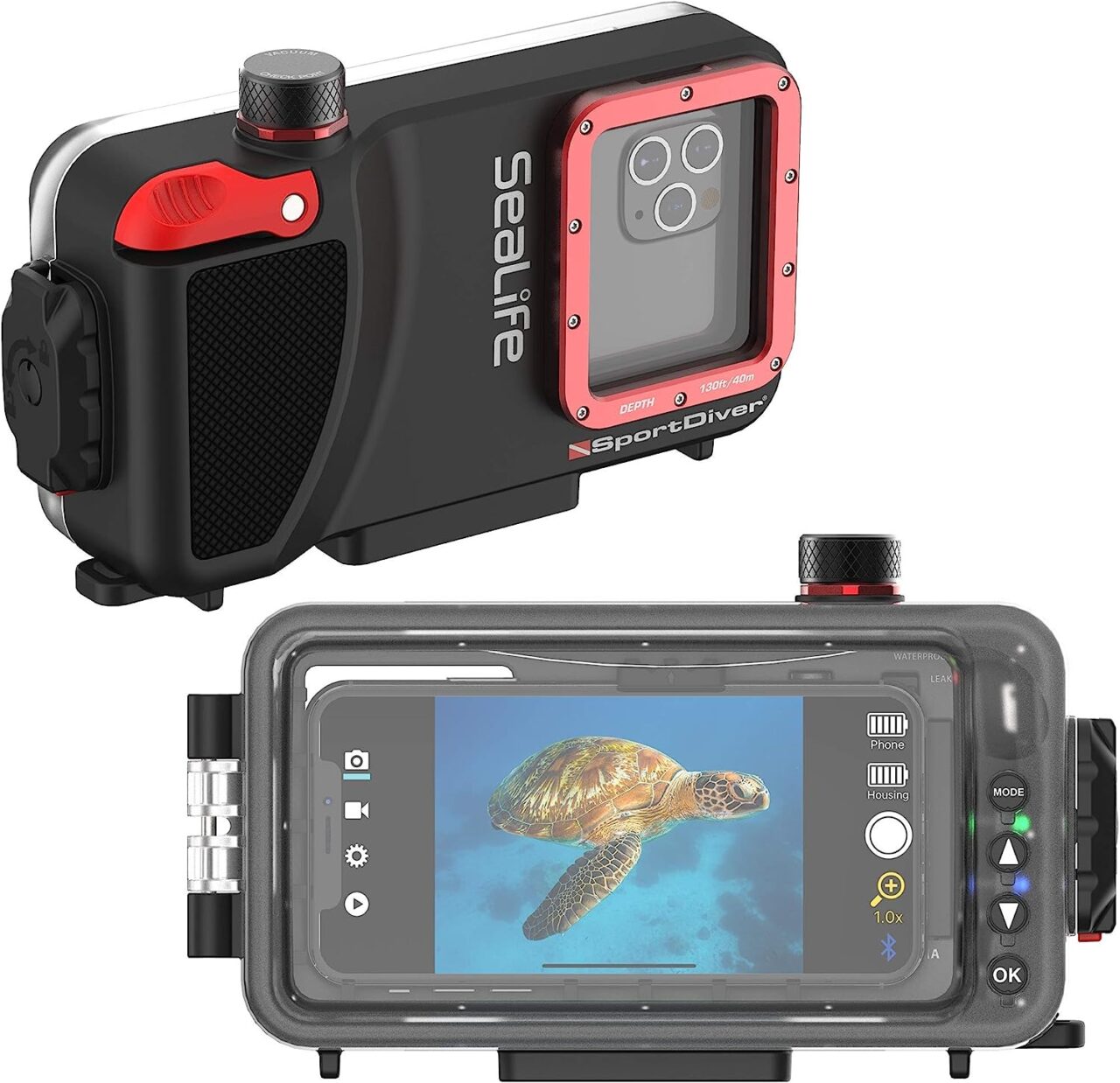
7) Best Underwater Housing for SmartPhones: Sealife SportDiver
Price: > $$
Fits most IPhones & Androids
Colour Correction Lens
Anti-Fog Capsule
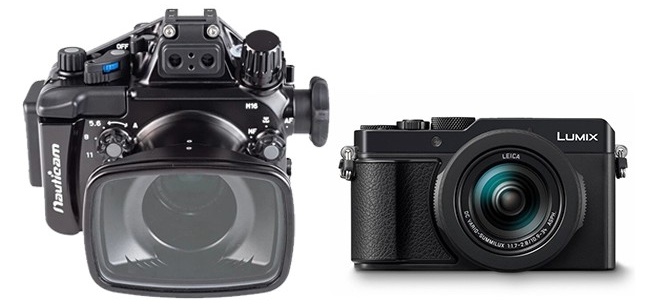
8) Best Point & Shoot Underwater Camera: Panasonic LX100 II
Price: > $$$
21.7 MP Large Four Thirds Sensor
Ultra HD 4K Video
Easy User-Interface

9) Best Mirrorless Underwater Camera: Sony Alpha A6600
Price: > $$$
World’s Fastest AF
24 2MP APC-C Exmor Sensor
5-Axis in-body Stabilisation
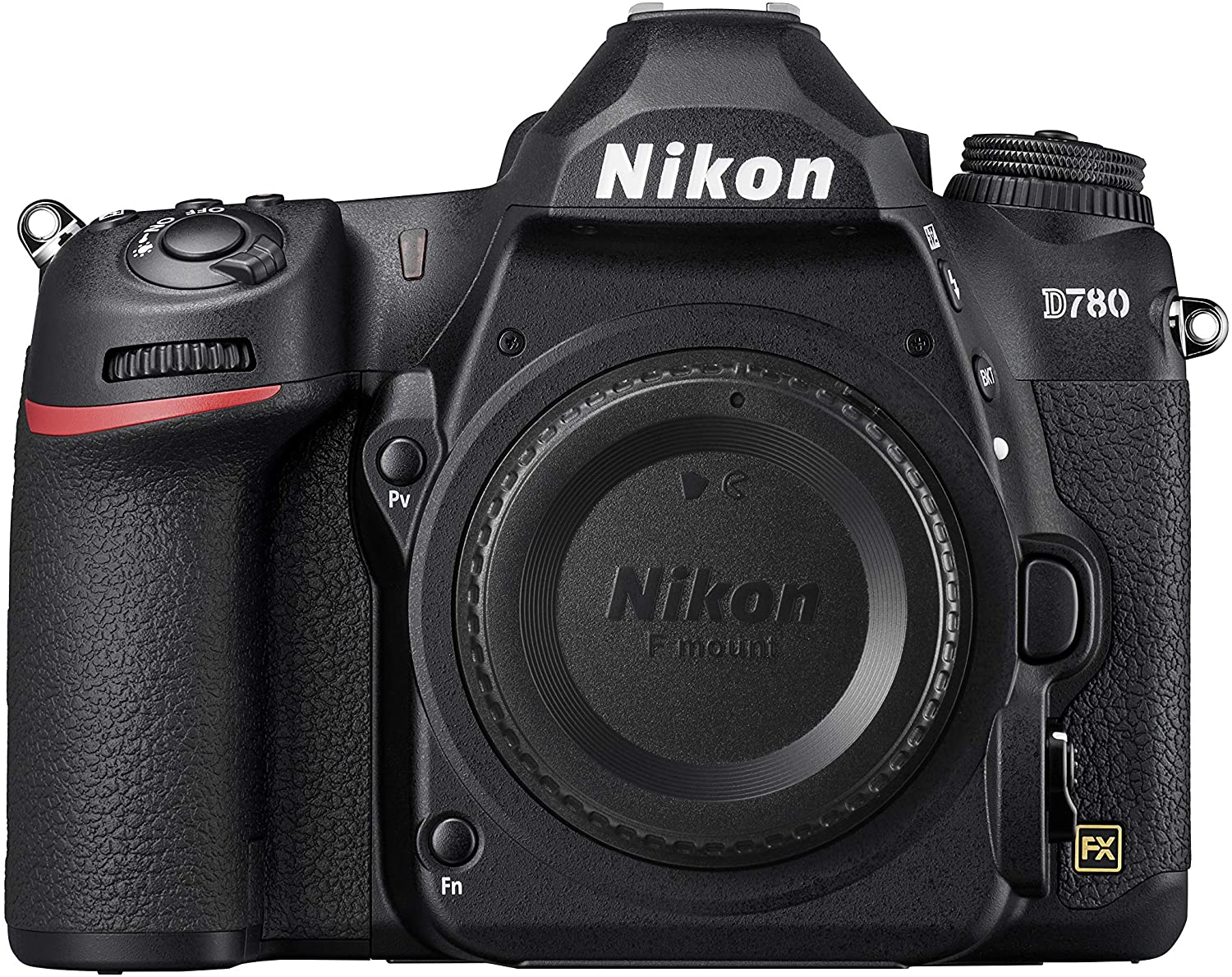
10) Best DSLR Underwater Camera: Nikon D780
Price: > $$$
24.5 mp Full-Frame Sensor
Expeed 6 Processing Engine
20 Creative Picture Controls
REVIEWS: Best Dive Cameras
- TOP PICK: Best Dive Camera for Beginners: Sealife Micro 3.0
- Best Underwater Camera for Macro: Olympus Tough TG7
- Best Underwater Action Camera: GoPro Hero 11
- Best Underwater Video Camera: DJI Osmo Action 4
- Best Dive Camera for Photos: Canon Powershot G7X
- Cheapest Underwater Camera: Akaso EK7000
- Best Underwater Housing for SmartPhone: Sealife SportDiver
- Best Point & Shoot Underwater Camera: Panasonic LX1OO II
- Best Mirrorless Underwater Camera: Sony Alpha A6600
- Best DSLR Underwater Camera: Nikon D78
1) TOP PICK: SeaLife Micro 3.0
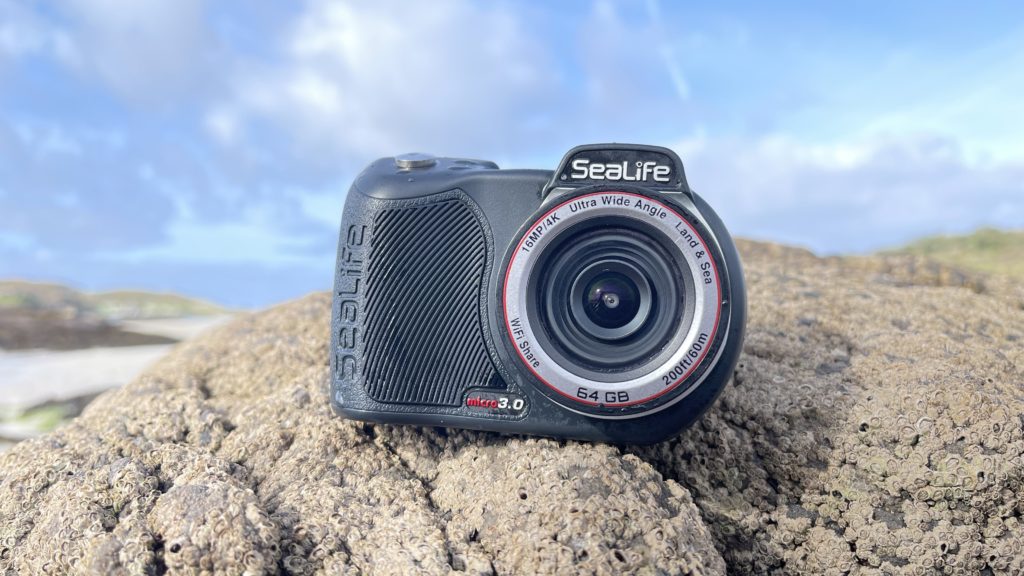
- Underwater Colour Correction (Automatic White Balance Adjustment)
- Excellent Video Stabilisation
- Fully-Sealed Housing: Waterproof to 200ft / 60m
- Shockproof, Durable & Compact
“In my opinion, the Sealife Micro 3.0 is the best dive camera for beginners thanks to how easy it is to use and it’s versatility; it takes excellent photos and videos and thanks to its wide range of available accessories can also be used for macro, wide-shots, night dives and so on.
Because its small it is effortless to use underwater; it won’t throw you off balance or affect your buoyancy like larger cameras can.
And by being permanently sealed within its waterproof housing, it won’t flood which is a really useful bonus – one less thing for newbies to worry about (other cameras have to be taken in and out of their UW housing).
I love the underwater colour correction; it has two modes: shallow and deep which are extremely quick and easy to switch between underwater via the large piano-key style buttons. Colours come out incredibly realistic with none of the blue hue seen when using underwater cameras for which the white balance hasn’t been adjusted.
This dive camera turns on in just 2 seconds and the bright LCD display is nice and easy to see at 2.4 inches across; allowing you to easily frame your shot. Battery life is very decent at up to 3 hours and getting files off the camera and onto your computer are super easy thanks to the USB cable.
This is a small, compact camera making it great for travel – it’s also incredibly durable and can totally stand being dropped from 3ft here or bashed against the side of the boat there – ideal for someone as chaotic as I”!
Alex: Grand Admiral of the Diving Squad
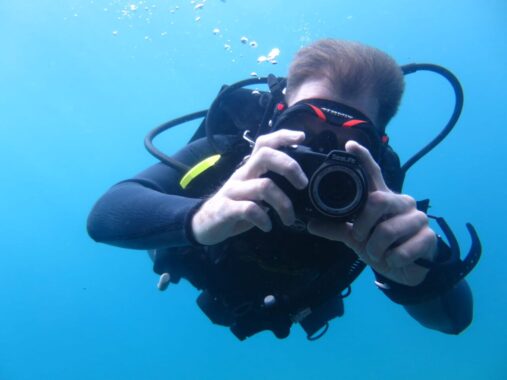
2) Best Underwater Macro Camera: Olympus Tough TG7

- Price: > $$
- Focus range: 25mm – Infinity
- Microscope Mode (7 x Magnification)
- 4 X Optical Zoom
- 12 MP stills and 4K Video at 30fps
- Video Stabilization
- Compact & Insanely Durable
The Olympus Tough TG7 is a minor update of the immensely popular Tough TG6 although it is basically identical in all aspects save for the fact that it allows USB-C Charging.
Whilst it would have been cool to see more improvements; it’s no huge deal that there aren’t; the TG6 was the best dive camera for macro shooters and the TG7 retains all of the superb features that made it so.
It’s most standout trait is the microscope mode which lets you focus on subjects as close as 0.39 inches which you can then use the optical 4X zoom to get as close as 3mm / 0.13 inches.
This makes the TG7 the best underwater camera for photographing tiny macro critters such as shrimp and nudibranch – you simply can’t focus as close to macro subjects with any other camera!
At the same time, by being able to shoot to infinity the TG7 can also be used for wide angle shots on the same dive and it takes nice videos at 4K / 30fps with decent video stabilization and RAW support. White balance can be adjusted manually but there are also shallow and deep underwater modes where this is done automatically.
Lightweight and compact, the TG7 is the most durable underwater camera going; being drop-proof from an impressive 7ft / 2.1 meters.
Its fully waterproof to 50ft / 15m without it’s underwater housing and waterproof to 147ft / 45 meters with its underwater housing – just be aware that you have to purchase that underwater housing separately.
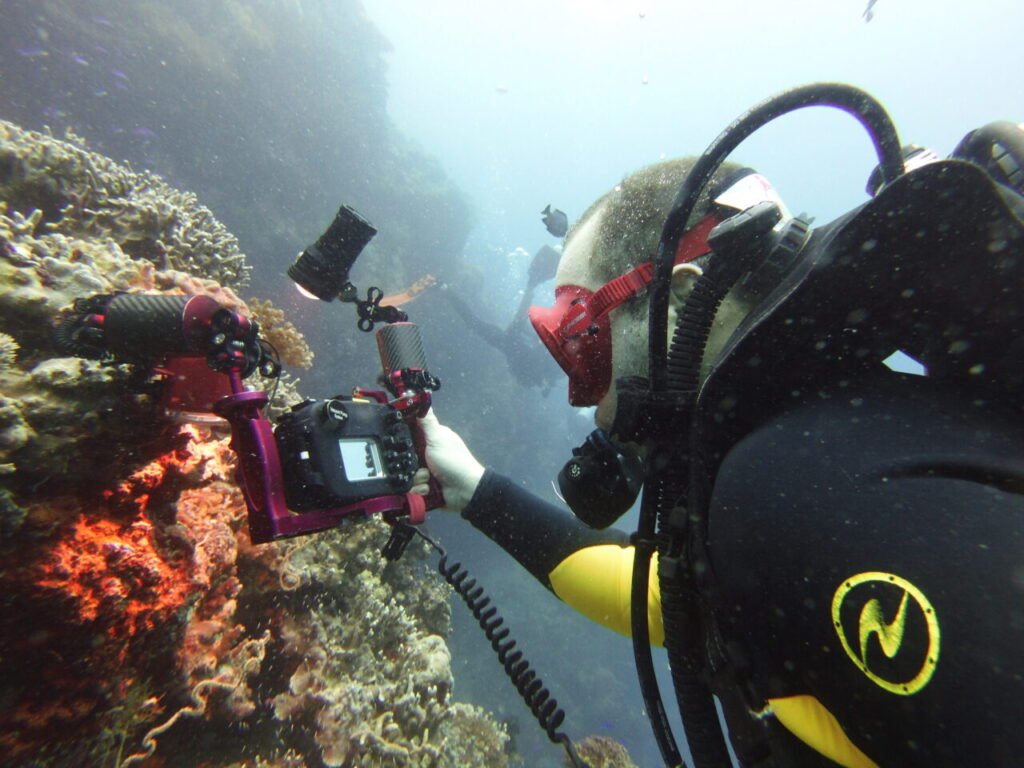
3) Best Underwater Action Camera: GoPro Hero 11
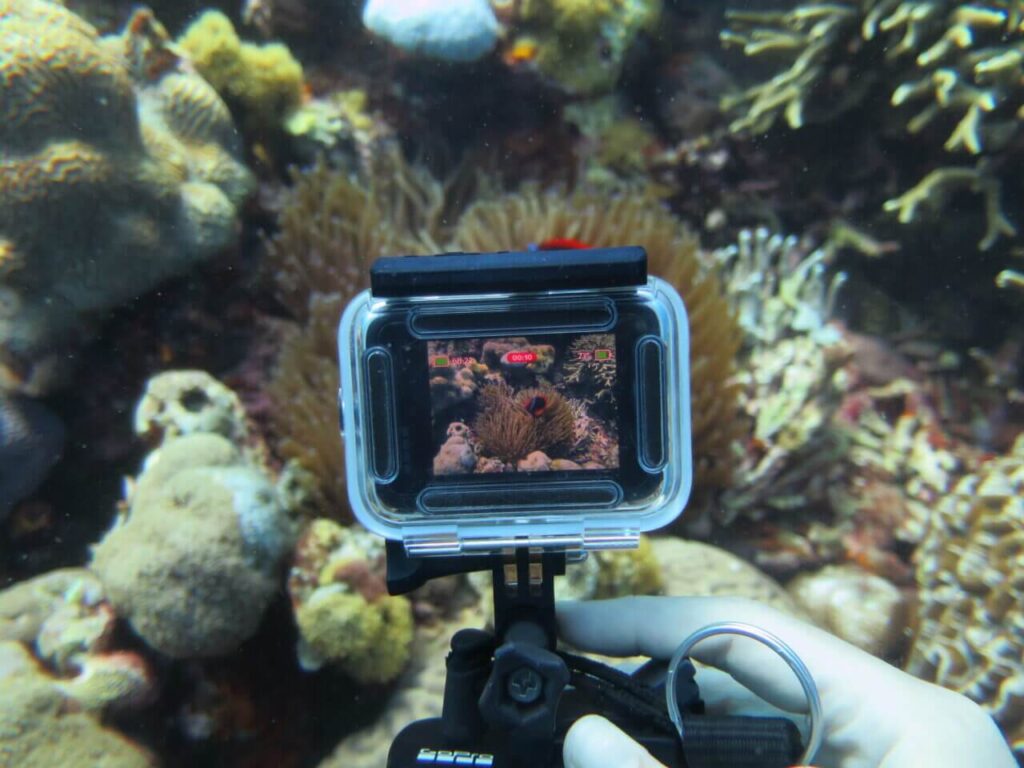
- Price: > $$
- 5.3K / 60fps Video
- 27 MP stills
Action cameras are affordable, digital cameras used for sports activities such as snowboarding, cycling and scuba diving! To be used underwater, they must be placed in a special underwater housing.
There’s a whole bunch of different brands of action cameras on the market but the most popular and high quality ones are undeniably the legendary GoPro Cameras.
In fact, the GoPro is the most frequently used camera of all time by scuba divers!The newest GoPro – the Hero 11 has superb video quality (up to5.3K / 60fps!), incredibly detailed 27mp photos and the best video stabilisation of any underwater camera, period.
You can manually adjust the white balance and ISO settings and store these setups as custom presets, meaning that with a little experience you can still get awesome underwater colour correction. There’s also a range of extra accessories including a macro lens, filters, tray and lighting.
The GoPro Hero 11 is also one of the only underwater cameras that has a display at the front (as well as the back) which makes it awesome for taking selfies especially when used with the selfie stick!
This is an awesome underwater camera – affordable, durable, compact and incredibly high quality. Even in the hands of a newbie it can take awesome underwater videos and photos.
4) Best Underwater Video Camera: DJI Osmo Action 4
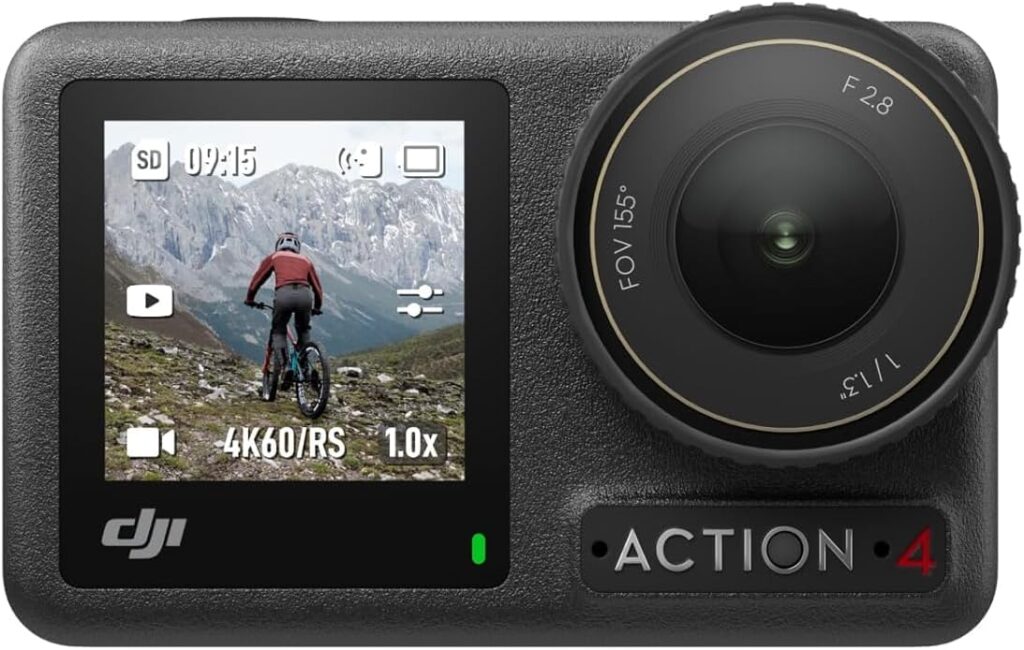
- Price: > $
- Easy to Use
- High Quality Video: 4K / 120fps
- Front screen for easy selfies
- Colour Temperature Sensor: Adjusts White Balance Automatically
- Vivid Underwater Setting
- 3 Video Stabilization Modes
Another action camera, the DJI Osmo Action 4 may be super affordable, ultra compact and well…not very well heard of – but don’t let any of these things fool you. It is an underwater video shooting machine!
Unlike any other waterproof camera currently on the market; it has a number of special features that make it excel at shooting underwater video.
For starters, it has a colour temperature sensor which automatically adjusts white balance to give more realistic colours underwater; no matter what depth and light level you’re diving at. At the same time, there’s still the option to turn this off and manually adjust the white balance yourself.
Next, it has a “Vivid Underwater Setting” which syncs visual info from the colour temperature sensor for awesome underwater video detail by making video image clearer and more defined.
There’s also a front display which makes it easy to take selfies; especially when used in tandem with the separately purchased selfie-stick and 3 video stabilization modes: Rock Steady, Horizon Steady and Horizon Balancing for ultra smooth videos without any shake.
The DJI Osmo Action 4 is also a lot more affordable than most other waterproof cameras; both because the cost of the actual camera itself is low but also because the underwater housing is insanely cheap at well below a hundred dollars; whereas most other underwater camera housings are many hundreds of bucks. That’s some awesome value for money!
5) Best Photo Quality: Canon Powershot G7X III

- Price: > $$
- 20.1 Mp 1” CMOS sensor for Superb Photos
- Built-in 24-100mm-equivalent lens
- Highly adjustable settings
- Good higher ISO
- 2 X Optical Zoom (24 – 100 mm)
- 4K/30fps Video
With a mighty 20.1 MP 1 inch image sensor, highly adjustable settings and easy-to-use controls, the Canon Powershot G7X III takes higher quality underwater photos than any other mid-priced underwater camera out there. Evenlow light situations, once the bane of a compact camera, are not a problem for the G7X III. Higher ISOs also look very good.
The lens of the Canon Powershot G7X III offers exceptional quality whilst the 2 X Optical Zoom makes for some excellent macro photography and auto focus is also excellent.
Despite all this, the Canon Powershot G7X III has an intuitive interface and is easy to use. Manuel control is possible as is RAW shooting.
Of particular note, white balance is spot on with which G7X III truly excels underwater. With a huge, 3″ LCD screen, it’s easy to see the picture you’re framing as well as the settings you’ve applied.
This is an extremely capable underwater photography camera, one that can produce exceptional pictures, provided you use the settings correctly. For someone with a little underwater photography experience, it will take your underwater photos to the next level.
6) Cheapest Underwater Camera: Akaso EK7000
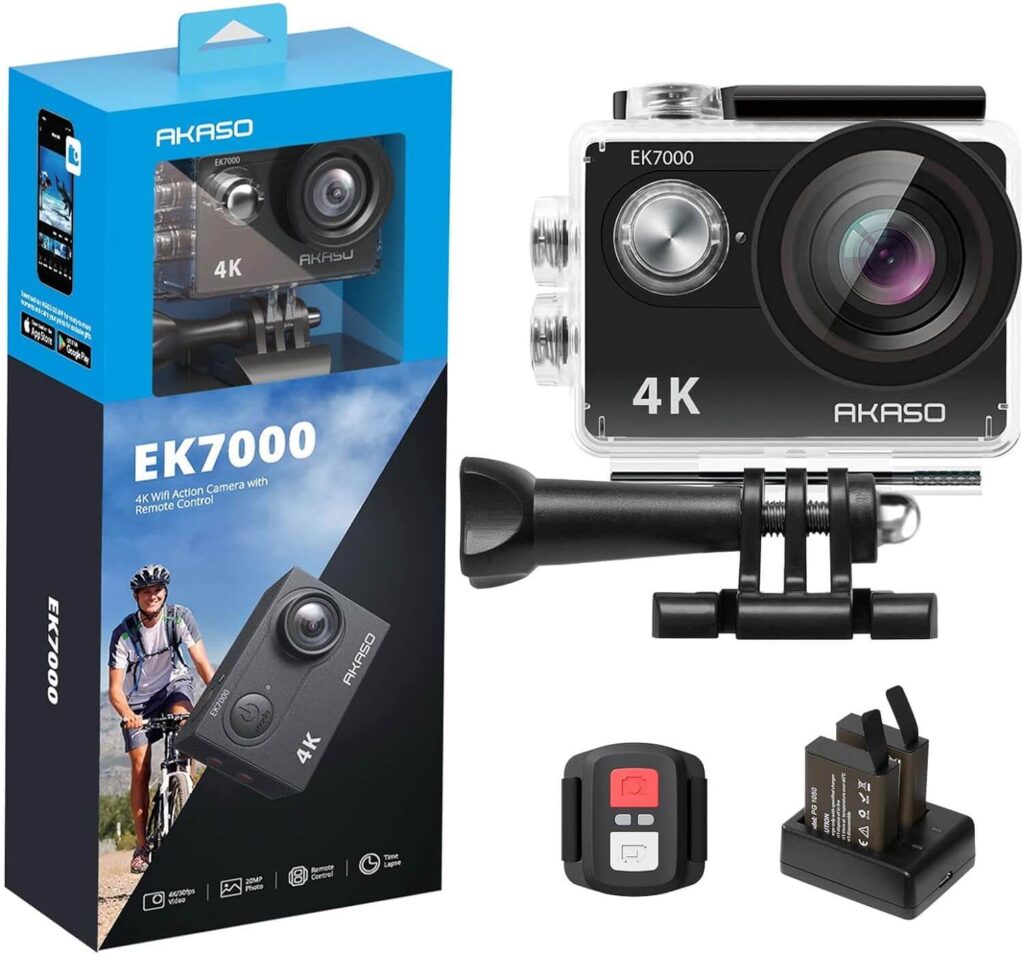
Despite being the cheapest underwater camera out there, the Akaso EK7000 packs a serious punch in terms of what it can do and the awesome value for money that it provides.
Not only is it the cheapest underwater camera, it is also the only action camera for which the underwater housing is included in the main price; meaning you save even more money.
It shoots 4K/30fps video with excellent detail and has a 16mp image sensor for crisp photos. If you want to avoid having a greenish / blueish tint to your underwater photos and videos then you’ll need to manually adjust the white balance settings but this is easy once you get the hang of it!
The AKASO EK7000 is insanely compact making it perfect for travel and once sealed within the waterproof housing is also able to stand up to being knocked about a fair bit.
Sealed within its included underwater housing, the EK7000 is waterproof to 98ft / 30m; a depth that recreational scuba diving rarely reaches.The anti-shake, whilst not as developed as video stabilization tech of more expensive diving cameras, still does a good job at making videos appear smoother.
If you’re just starting out at taking underwater photos and videos and you want to spend as little money as possible; this is a great choice -but don’t be fooled by the low price, it will surprise you with how decent it is for a first time waterproof camera.
7) Best Waterproof Housing for SmartPhones: Sealife SportDiver
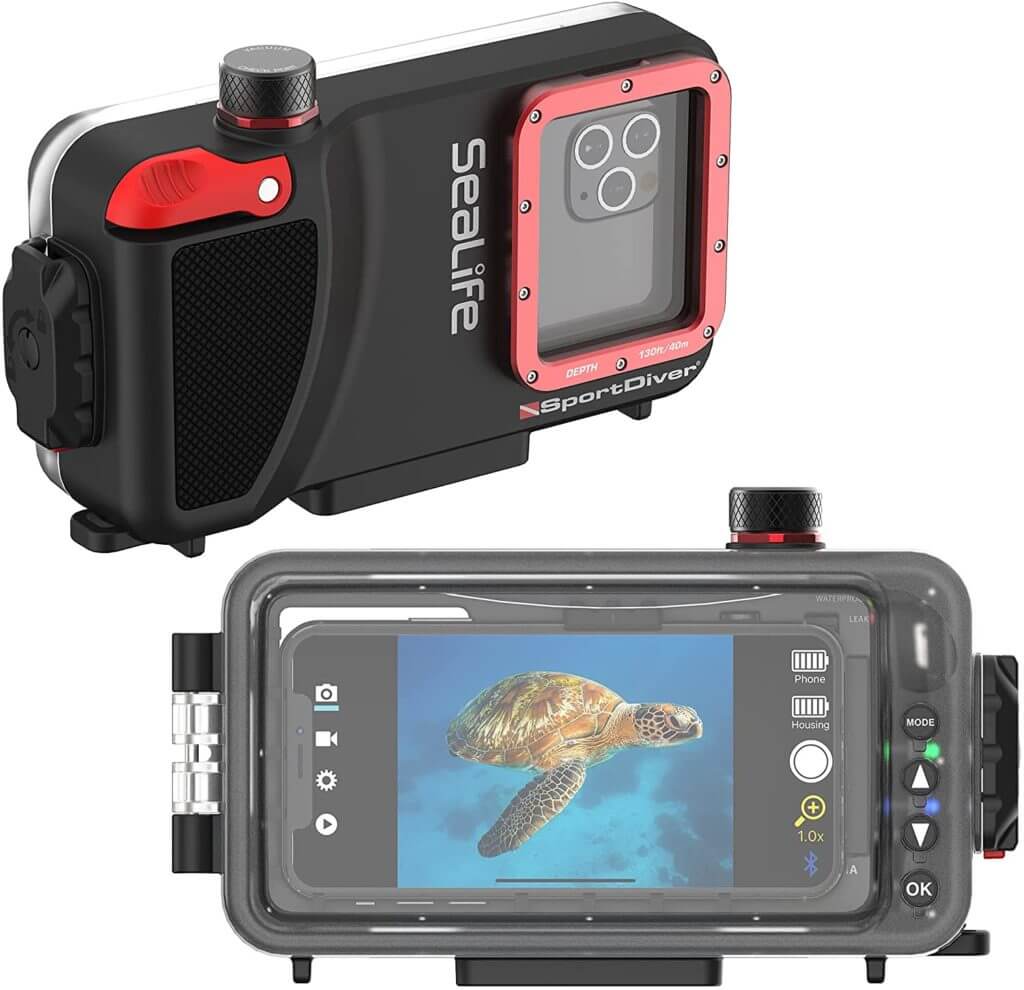
- Price: > $$
- Waterproof to 130 feet / 40 meters
- Fits most iPhone and Android Models
- Enclosed Anti-Moisture Capsule
- Enclosed Anti-Moisture Capsule
- Removable Colour Correction Lens
It may seem a little daunting to place your beloved smartphone in an underwater housing and then take it scuba diving but the Sealife SportDiver let’s you do exactly. Never fear – in the unlikely event you don’t properly seal your phone within it, it will immediately give off both audio and visual alarms to inform you.
The advantage of taking a smartphone scuba diving is that these days, the quality of photos and videos taken by smartphone cameras is insanely high. On top of this; there’s practically an infinite supply of smartphone apps for photo and video editing and recording; many of which are even tailored for doing so underwater.
So whilst the SeaLife Sport Diver is extremely affordable, you have the potential to take underwater photos and videos that are of a quality akin to what would normally only be possible to capture with a far more expensive camera.
An enclosed anti-moisture capsule prevents fogging and there is also a colour correction lens for basic underwater colour enhancement. Whilst this might not be as sophisticated as white balance adjustment – the many colour correction apps available for smartphones can do this for you.
As well as serving as a nice alternative to buying an underwater camera, the Sealife SportDiver is also a great backup option – not only will it guarantee that your phone stays dry on even the bumpiest of boat rides it means that should you forget your actual dive camera, you have something to fall back on.
8) Best Point & Shoot Camera for Divers: Panasonic LX100 II

- Price: > $$$
- 4K Ultra HD Video
- 21.7 MP Large Four Thirds Sensor
- Macro Shooting
- Electronic Viewfinder
- Simple User-Interface
With an enormous Micro Four Thirds 21.7 mp sensor that offers superb image quality and excellent low light performance, the Panasonic LX100 II is our favourite high end point and shoot underwater camera.
It’s surprising but awesome to see a micro four thirds sensor, which is usually reserved for larger mirrorless cameras, in a point and shoot.However, doingso means that the LX100 II has some of the best low light performance and dynamic range of all compact cameras.
The LX100 II can go to 100m / 330ft with its Nauticam housing, which is made of Aluminum that has been moulded especially to fit this camera. Because any shape and design can be CNC machined from alumium, the housing for the LX100 II is extremely well contoured, with the buttons being easy to control and highly accessible.
This premium camera has a fast and very sharp leica lens that further helps in dim situations, not to mention renders great photos. Wide angle and macro shots are particularly good, which are the two types that divers will probably be using most. At 24-75mm, the focal range is notably short compared to other compact cameras.
The controls of the Panasonic LX100 II are extremely intuitive and allow for more manual mode customization than most other compact dive cameras in its class. Exposure is fully adjustable and the white balance metering is very accurate.
The auto focus keeps up very well regardless of the fps and even functions admirably in low light.To top everything off, the Panasonic LX100 can shoot in 4K Ultra HD video!
PROS:
- Huge MFT sensor.
- Compact camera.
- Fast auto focus and high overall performance.
- 4K Ultra HD video.
9) Best Mirrorless Camera for Divers: Sony Alpha A6600
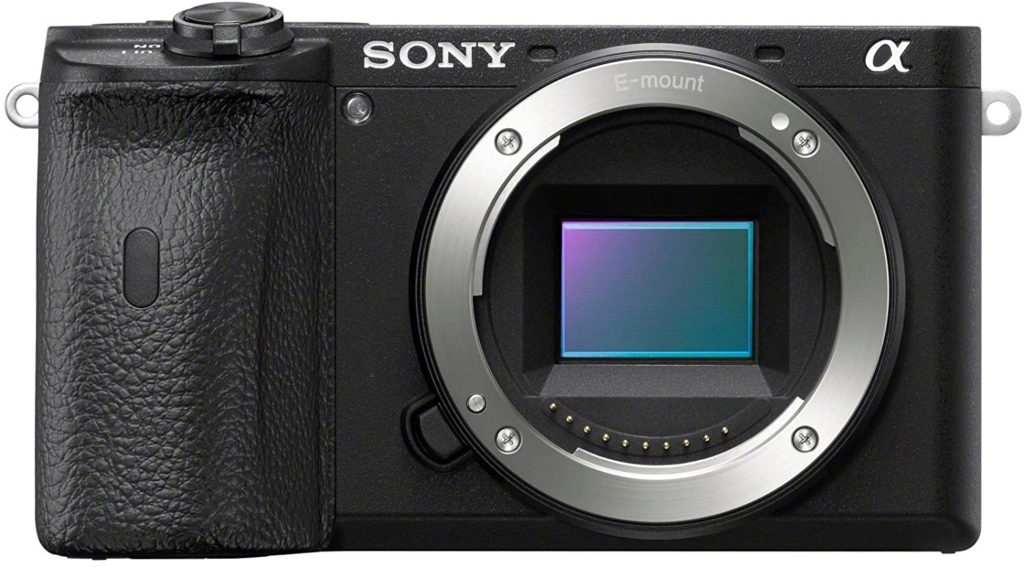
- Price: > $$$
- World’s fastest AF at 0 02 sec w/ real-time AF & Object Tracking
- 24 2MP APS-C Exmor sensor w/ front end LSI & ISO up to 102 400
- Wide angle 425-phase/ 424-contrast detection AF ponts over 84% sensor
- Up to 11fps continuous Shooting at 24 2MP RAW
- 5 axis Stabilization
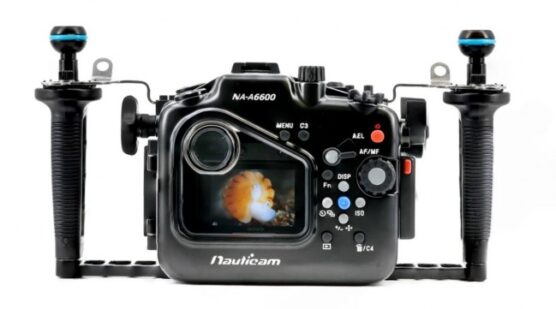
Few other underwater mirrorless cameras can compete with the stellar combination of the Sony Alpha line’s size, performance, and accessibility.
The Sony Alpha a6600 continues this trend by blowing photographers away with its a whopping 24MP APS-C sized sensor; which provides ultra detailed images and ultra HD 4k video with no fisheye distortion,whilst supporting multiple aspect ratios including 4:3 (17 mp), 3:2 and 16:9, without any change in focal depth!
The well developed image stabilising technology of this camera also results in smooth, shake free video footage.
Despite it’s stellar specs, the Sony a6600 is extremely compact, being about the size of a cell phone; albeit thicker. Because ofthis, it lacks many physical controls that are normally present, which will appeal to some, but may be frustrating to others.You can still change all of the usual settings via one of the many in-camera menus.
Using WiFi integration, you can hook your Alpha A6600 to the Panasonic Image APP to easily edit share videos and photos on social media! This is the best underwater camera of a mirrorless design out there.
PROS:
- Affordable!
- Extremely compact and light.
- Superb image quality.
- Excellent 4K video.
- Image stabilisation.
- Supports multiple aspect ratios.
10) Best DSLR Camera for Divers: Nikon D780
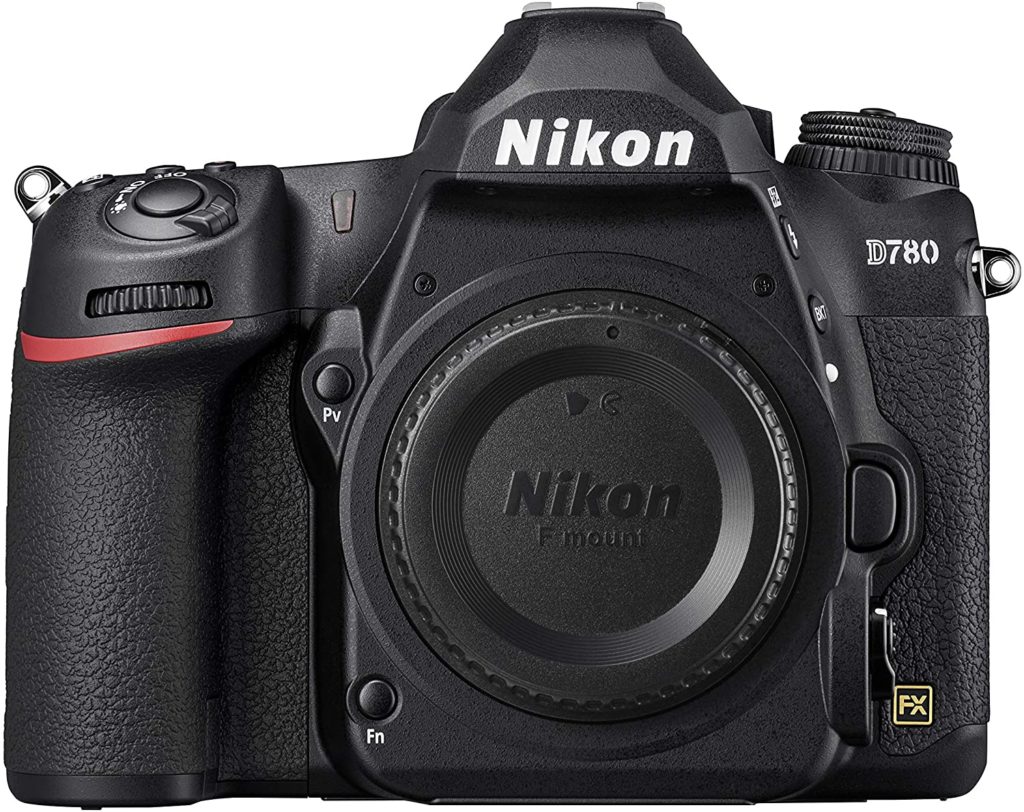
- Price: > $$$
- Backside illuminated 24.5 mp Full Frame Sensor.
- Robust EXPEED 6 image processing engine
- Full Frame 4K HD Video.
- 20 unique, high quality creative picture controls
- Built for durability – made using rugged magnesium alloy and carbon fibre
- RAW support
- 51 point AF system detects and tracks subjects seamlessly
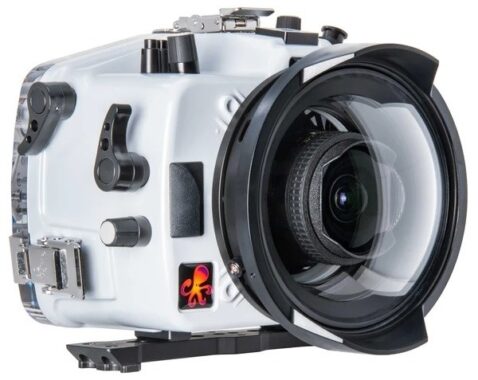
Currently the Nikon D780 is the best underwater DSLR camera on the market, having a formidable 24.5 mp full frame image sensor and being able to capture UHD 4K video, whilst also featuring a rich selection of advanced controls.
It offers improved time-lapse movies to shutter speeds of 1/8000 to 900 s as well as diverse movie functions including 4K UHD/30p with HDR (HLG) support. Plus, there’s 20 unique high quality creative picture controls.
The D780 may be expensive – as is it’s separately purchased underwater casing, but combined, these two items are a truly special bit of kit for any advanced underwater photographer.
Used correctly, this camera will capture incredibly rich and detailed photos, even at the low lighting levels associated with deeper dives.
Plus, it’s 51 point AF system can detect and track subjects better than virtually any other underwater camera can.
However, the one thing the Nikon D780 is missing is in body image stabilisation when shooting video. It can be hard to avoid lens shake underwater! Without image stabilisation, the Nikon D780 can only really shine through for photography, not underwater videography.
PROS:
- Captures superb photos.
- RAW support.
- 90 extra interchangeable lenses available.
- Highly durable.
11) Compact Underwater Camera for Pros: Sony RX100 VII
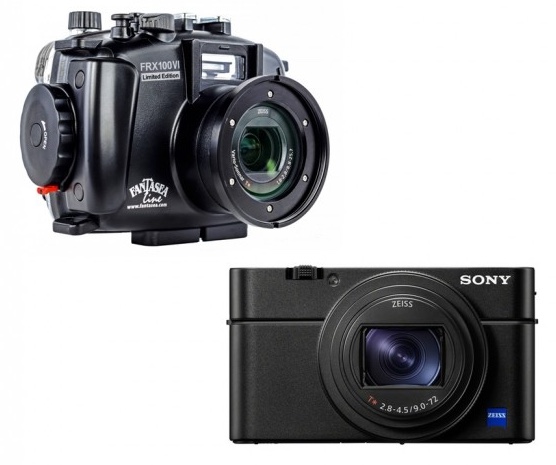
- Price: > $$$
- Only Weighs 302 grams
- Super Compact
- Up to 20fps blackout free shooting, using up to 60 times/sec
- 0.02 sec. High AF speed.
- 20.1 MP 1.0 Type stacked CMOS sensor
- Ai based real time tracking for stills and movies and touch tracking
- 4K video with s log3 and interval shooting
When the first Sony RX100 was released it was a groundbreaker, thanks to its exceptional image quality, blazing fast frame rate, and pint-sized package. The Sony RX100 VII is the latest and greatest of the line and so offers the best of all these things.
Weighing just 302 grams, it is an exceptionally lightweight and compact camera, with an overall size of 4″ x 2.29″ x 1.68″, the Sony RX100 takes up very little packing space indeed.
It has a full 1” 20.1 Mp sensor that renders gorgeous photos. The built-in 24-70mm f/1.8-2.8 performs very well but is a little short focally. Macro photography is not the Sony RX100 VII’s forte either and it only creates decent photos up close. You’ll need to buy additional wet lenses for proper macro photography.
On that note, the auto focus of the Sony RX100 VII is also very fast and snaps to in a blink of an eye. Effective image stabilization also limits hand shake. For those who like to capture sharks or other nimble sea critters, the Sony RX100 VII maybe be the best compact camera for you.
The Sony RX100 VII also shoots full HD 4K video without any fisheye distortion and with a phenomenal optical zoom with a range of 24-200m it is superb for macro photography!
PROS:
- Cheap Underwater Housing available.
- Light and compact.
- Long battery life.
- Can capture fast moving objects.
- 24 – 200mm optical zoom lens makes it great for macro.
- 20.1mp sensor renders amazing photographs.
CONS:
- Expensive, even by premium camera standards.
12) Super Tough Underwater Camera for Pros: Olympus OMG EM-5 Mark III
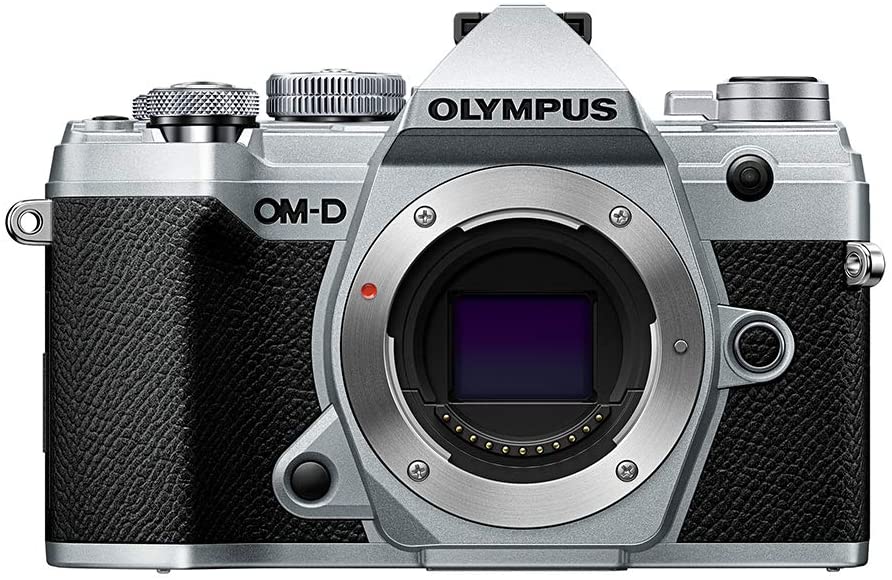
- Price: > $$$
- 20 MP Micro Four-Thirds Sensor
- 5-Axis Stabilisation
- Improved Image & Video Stabilisation (up to 5.5 EV shake compensation)
- 4K HD video at 2160p
- Freeze-proof, splash-proof and dust-proof
- Compact
Despite it’s small size and lightness, the Olympus OMG EM-5 Mark III is insanely durable – it’s has an IPX1 protection rating, which means it’s fully weather resistant and the exterior is made from tough, composite plastic.
Of course, in order to take this camera underwater, you’ll still need to purchase the underwater housing separately but at least it’s still relatively affordable compared to other high end cameras. With it, the Mark III can go to 600 ft / 200m.
The OM-D E-M5 Mk.III excels at still images thanks to its superb auto focus, shooting speed, and 5-axis image stabilization. Itcan shoot stills up 30 fps with full stabilization and neither the auto focus or buffer lag behind. Olympus also makes some of the finest and most impressive lenses in the business so you should have plenty of optical options.
The E-M5 II does use a smaller Micro Four-Thirds sensor so it still can’t compete with larger APS-C or full frame camera in dim situations. That said, this sensor has 20 Mp and so it still renders very attractive images.
Most impressively, the Olympus OM-D E-M5 Mark III can record videos at 4K UHD 2160p! Also, the improved image stabilisation offers up to 5.5EV shake even when recording in video, meaning the Olympus is a great camera for shooting underwater video to!
PROS:
- Excellent video stabilisation.
- High quality video at 4K UHD.
- Highly detailed photos with 20MP sensor.
- Compact, light and weather resistant.
- Not too expensive.
13) Best Underwater Video Camera for Pros: Panasonic Lumix GH5
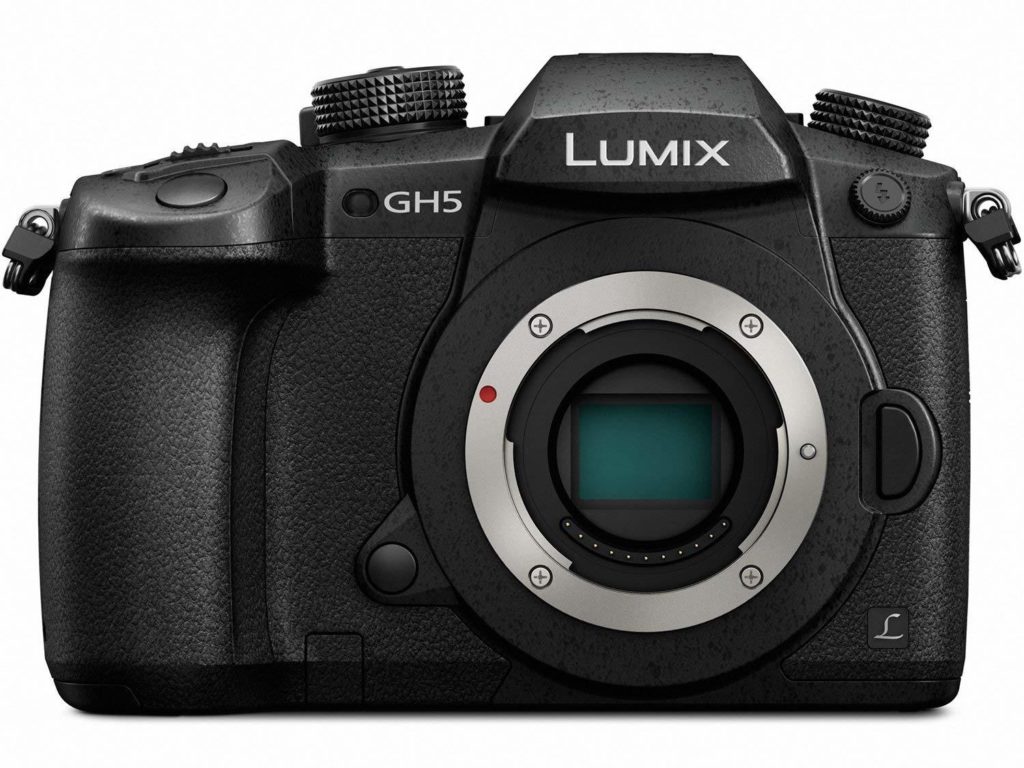
- Price: > $$$
- 20 MP Micro Four Thirds image sensor
- 4K video at up to 60fps
- White Balance Metering
- Spectacular video quality
- Strong autofocus
- Video Stabilisation
- Video resolution at 4096 x 2160
With the Lumix GH5, you are able to capture stunning 4k videos and stills that are comparable in quality to much more expensive full frame bodies.
The Panasonic Lumix GH5 shoots some of the best videos in the game thanks to its full-sensor-width 4k shooting, which can shoot up to 60 fps with a staggering video resolution of 4096 X 2160. Videos shot by the GH5 are extremely sharp and don’t suffer from any pixel dumping at all. Fisheye distortion is entirely non-existent with the Lumix GH5.
Plus, it has a 20MP image sensor that snaps extremely detailed and clear images!
The GH5 performs very well underwater (when inside it’s housing!), thanks to excellent metering, autofocusing and image stabilization. It also features improved white balance metering, which particularly helps out when shooting at greater depths, where light is more limited.
Although it’s more expensive than most other premium underwater cameras, the Lumix GH5 offers truly exceptional quality – it’s a superb choice for anyone whose serious about underwater videography.
PROS:
- Excellent Video quality.
- Great video and image stabilisation.
- High quality photos.
- White balancing means it performs well at depth!
CONS:
- Camera is bulky and not very light.
- More expensive than other options.
14) Best Luxury Underwater Camera for Pros: Sony A7R IV
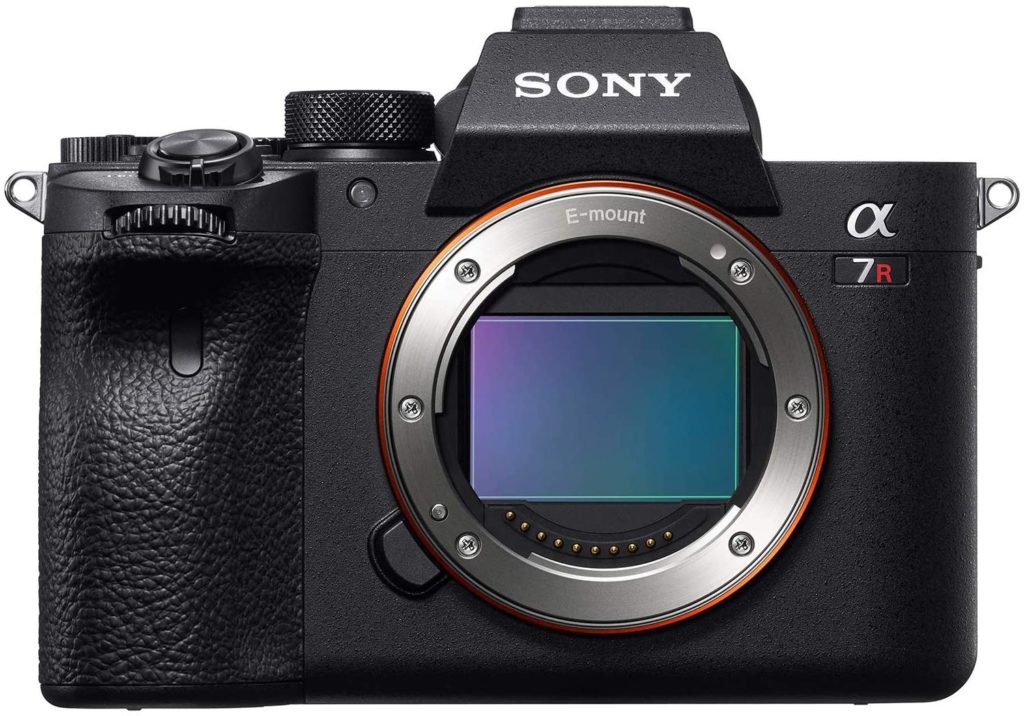
- Price: > $$$$$
- World’s first 61 MP full frame optical resolution sensor
- Video Capture Resolution of 2160p
- Up to 10FPS continuous shooting at 61Mp
- Rapid Hybrid Autofocus: 567 Phase detection AF points and 425 contrast AF points
- Accurate colour reproduction: 15 stop dynamic range at low sensitives
- Incredible detail: see fine details with area specific noise reduction
- 4K video at 30fps: full pixel readout
- Compatible with many foreign lenses
If you can lay down some serious money and you’re after a professional camera that can be taken underwater (with a separately purchased underwater case), the Sony Alpha A7R IV is the number one choice to go for.
With it’s truly gargantuan 61 MP sensor (the first in the world!), this professional underwater camera offers image detail and quality that no other camera can come even close to matching.
The Sony Alpha A7R IV is packed with features including advanced image stabilization, exceptional autofocus and countless shooting options.
There’s really very little to criticize the Sony Alpha A7R III in regards to image/video quality. Dynamic range and high ISO performance are spectacular in the A7R III. Videos can be recorded at 4k and are predictably gorgeous. You can also mount extra interchangeable lenses on this camera, which expands the shooting opportunities with it immensely.
Even though the Sony Alpha A7R VI can at first seem like an intimidating camera, it is actually not that hard to use. The physical controls are all fairly easy to understand the in-cameras are effective. Once you figure the many modes and features that this camera has, like focusing peaking, your underwater photography will be taken to a new level.
PROS:
- 61 MP (!) – highest resolution of any full frame camera in the world.
- Many shooting options.
- Advanced image stabilisation.
- Excellent autofocus.
- Surprisingly easy to use.
- Compatible with many foreign lenses.
- Variety of UW Housing Options and other Accessories available.
15) Best Luxury Camera for Pros Runner-Up: Canon 5D Mark IV
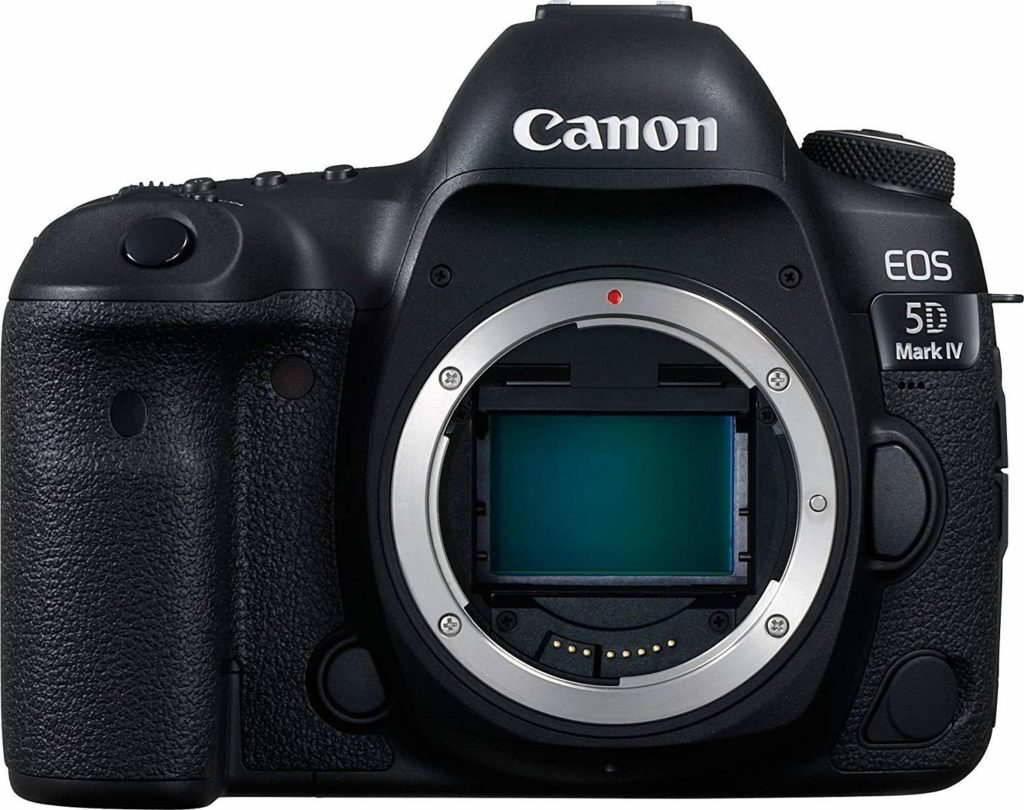
- Price: > $$$$$
- 30.4 MP sensor
- 4K Video at 30fps
- Superb dual pixel CMOS AF for responsive and smooth AF
- Can go to 100 / 330 ft with Nauticam Housing
- Range of Underwater Housing Options
- Up to 7.0 fps continuous shooting speed with high performance DIGIC 6+ Image Processor
For professional underwater photographers, the Canon 5D Mark IV is one of the best underwater cameras going. With a plethora of features, a great full frame sensor, and, of course, the weight of Canon’s superlative lens lineup behind it, this premium camera delivers in every way.
It has an impressive 30.4 Mp full frame sensor that performs exceptionally well in dimly lit situations. Even in near darkness, the 5D captures excellent images. Autofocusing is fast and consistently accurate, which will pay off underwater where contrast and lighting are not usually optimal.
Most impressive about the Canon 5D Mark IV is its near perfect metering, which excels even underwater. Exposure levels will be spot and more importantly, white balance should be accurate 9 times out of 10.
The Canon 5D Mark IV shoots stunning 4k video, which, in addition to all of the aforementioned features, makes it one of the best underwater video cameras for professionals as well.
PROS:
- Excellent images and video.
- Ultra reliable.
- Fast autofocusing.
- Superb white balancing.
- Good exposure levels.
CONS:
- Extremely expensive.
WHAT TO CONSIDER for an Underwater Camera:
Below is a list of features that one needs to think about before choosing the best dive camera for themselves. Consider all of these points and then revisit over our choices one more time. With some research and enough time to brainstorming, the best diver camera for you will become clear.
We’ve also written an entire separate article about nailing Underwater Photography.
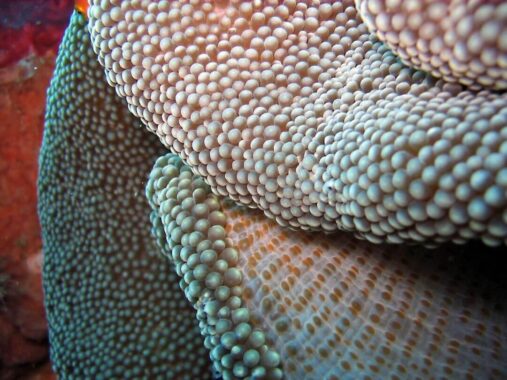
Type of Camera:
Generally speaking, you can turn just about any camera into a dive camera so long as you have the proper housing for it. Good news is that the majority of digital cameras have their own special waterproof shells thanks to third-party manufacturers. This means that you have a lot of options when it comes to choosing the type of dive camera best for you.
- Action Cameras:
(GoPro, Garmin, TomTom Bandit…) – Action camera make great underwater cameras because they are designed to survive in various conditions and to take great videos.
They are very affordable as well, which makes them some of the best dive cameras for beginners. Action cameras are on their own waterproof but usually only to a minor degree – you’ll need to use an additional housing if you’re going diving. Action cams are often very poor at still photography.
- Compact Cameras/Point-and-Shoot:
(Canon GX7, Sony RX100, Olympus Tough TG 6…) – Compacts make some of the best dive cameras because they usually offer a good mix of size, image quality, and affordability. They’re also very easy to use thanks to their lamens design.
Compact cameras sacrifice a lot of functionality for ease of use. Many lack the advanced features that are necessary for higher-grade photography. Most also have smaller sensors, which struggle in low light. You’ll have to buy a good compact camera to regain these features.
Some point-and-shoots are built to be waterproof and shockproof, thus making them rugged compacts. This means, depending on how deep you’re going, you may not have to buy and expensive dive housing.
- Mirrorless Cameras:
(Sony a6000, Panasonic GH5…) – Mirrorless cameras are a step-up from compacts and are one step closer to DSLRs. They offer excellent image quality, portability, and usability thanks to a plethora of features and technology.
Unfortunately, mirrorless cameras usually suffer from short battery life. They can also be big investments as you’ll definitely need an underwater housing and multiple lens ports. Granted, most mirrorless cameras are still not as big or pricey as DSLRs.
- DSLR Cameras:
(Canon 5D, Nikon D7200…) – DSLRs are often considered to be among the best dive cameras for professionals. They are very powerful, have great battery lives, and huge libraries of lenses to choose from.
DSLR cameras are also the biggest, heaviest, and most expensive cameras for underwater photography. Adequate dive housings cost at least $1,500 and can be a whole lot more. This plus the learning curve that DSLrs usually demand make them inappropriate for first time underwater photographers.
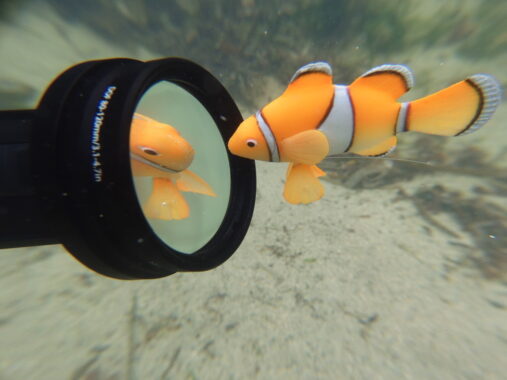
Size and Weight:
Size and weight play an important part in both the transport of all of your gear and, to a lesser extent, how it interacts with you in the water.
You’ll want to keep the total weight of your equipment under 50 lbs because a) it sucks to carry around more and b) you’ll get hit with an excess baggage fee at the airport for anything more.
You’ll have to consider the size and weight of all of your gear and not just the camera when packing/hauling your bags. The mass or additional accessories like strobes, extra lenses, and monitors all add up, very quickly. They may not feel as heavy in the water but they will feel heavy when you try to leave the house.
You’ll definitely need a special bag or carrying case to protect your equipment. Depending on how much you have and how much you travel, you might need a hard case like the Pelican 1500. At that rate, you should always have some sort of insurance as well; disaster can strike at any time.
Buoyancy and maneuverability are somewhat influenced by the size and weight of a camera system though not by much. Most camera housings are already designed to be neutral in water so whether you like them to be more or less buoyant is really up to you. How hands-free you like to be or how easily you like to move around is a little more relevant.
Do you mind swimming around with a kit that’s the size of a large steering wheel? Then a DSLR with a housing is possible for you. Do you want both of your hands-free and feel less encumbered? Then a rugged compact, which can fit in a pocket, is probably for you.
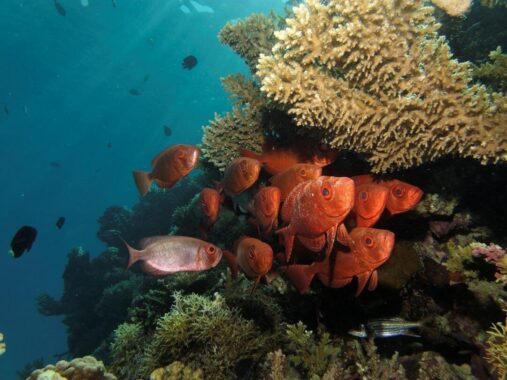
Ease of Use:
When choosing the best dive camera, it is very important to make sure that the controls are understandable and accessible. On that note, it is also crucial to have the right controls that will allow you to change settings manually and really nail a photo. The best dive camera for you will strike the right balance between usability and customizability.
Controlling a camera underwater is a similar experience to controlling one on land. You’ll still have to change settings like exposure, white balance, and shooting modes via a series of physical and in-menu controls. Being able to access and understand these is very important. Consider buying a camera with good manual controls and, if you struggle with these, learn how to use them.
Underwater camera housings are designed to work specifically with certain cameras and are usually pretty responsive. Not every button may be available though when a housing is installed and those present may not be perfectly tuned. Some underwater housing controls may be finicky or tedious to use.
Those who prefer to shoot in automatic modes will probably be frustrated underwater because cameras often struggle to get a proper reading when submerged. Strange lighting conditions tend to cause autofocusing systems to search and exposures to be thrown off. Unless a camera is specifically designed to be used underwater, most will have greater difficulty with metering while diving.
In particular, some cameras really struggle with white balancing when underwater and may not even be capable of registering the temperature of the scene. If your camera cannot get a proper WB reading, you may need to invest in a red filter to compensate for the extra blue castes. Thankfully, more and more cameras these days have broad enough temperature scales to get a proper WB reading while underwater.
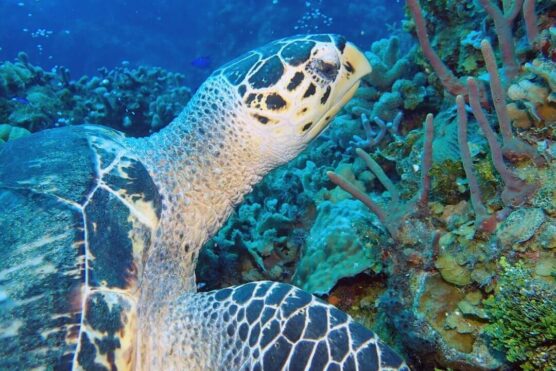
Underwater Housing:
Finding the best underwater camera housing is equally as important as choosing the best camera for underwater photography. The housing provides crucial protection against water, trauma as well as pressure.
Not all underwater housings are created equal and divers should be very particular about the quality of a potential housing. All sorts of features should be taken into consideration like maximum depth, building materials, accessory ports, and internal components.
Each dive housing will be rated to go up to a maximum depth before compromisation becomes a risk. Depths range from 150 to 300+ feet. Take note of how deep you usually dive and which rating is best for you. If you should spring a leak, some housings come with a leakage alarm, which is pretty useful.
The internal components of an underwater camera housing can be physical or electronic. Electronic components may be faster and more responsive but can fail more easily. Physical components can sometimes be tedious to use but work for the most part at least. You must also consider if a housing can accommodate additional accessories, including lights, floats, and lens ports.
Build-wise, underwater housings are usually made of either high-grade plastic (polycarbonate) or aluminum. Polycarbonate is lighter and cheaper but is more prone to breaking as well as internal fogging. Aluminum is the strongest, most reliable material and can last for years but costs an arm and a leg. Aluminum housings generally offer smoother operation as well thanks to higher-quality design work.
We made the Ikelite our go-to dive camera housing because they’re relatively (big emphasis on relatively) affordable and effective. Being made primarily of polycarbonate though, Ikelites are not the most durable camera housings currently available.
If you want something supremely hardy, that can go deeper and take more of a beating, then we suggest going with Nauticam brand dive housings. Made from strong aluminum housing materials, Nauticam housings are among the best underwater camera housings currently available. They are (no surprise) extremely expensive.
Image / Video Quality:
If you just want to snap a few photos while diving and don’t care about having the best camera for underwater photography, then stick with an easy and inexpensive dive camera. These cameras are very easy to use and provide images that are good enough. You may not have to worry about buying extra lenses or lighting accessories either.
If you wanted to take the best images possible, there are many things to consider. Several factors play a role in image quality and you’ll need to think about each. Most importantly you need to be aware of the sensor, lens selection, and lighting.
Camera sensors play a huge part in how images turn out. Larger sensors generally have greater dynamic range and function better in low light situations, the latter of which is near constant underwater. Lots of mirrorless cameras and DSLRs have full frame sensors but know that they will be heavier and more expensive.
Lenses also influence image quality and directly affect aspects like sharpness, contrast, DOF, and distortion. Choosing the right lens really depends on which camera company you invested in and what’s available from them. The Broke Backpacker has already written guides on the best Canon lenses and Nikon lenses but know that Olympus, Panasonic, and Sony all make excellent lenses as well.
Lighting is very important in underwater photography. Because water absorbs so much light, aquatic scenes are almost always dim and lacking color. To really capture the vibrancy of an underwater subject, you’ll need extra lighting equipment. Extra equipment adds extra weight and costs, of course.
Artificial lights or strobes come in varying outputs and sizes for varying scenes. For macro, you may just need one decent strobe. For wide angle shots, you’ll definitely need two. Underwater videography requires special video lights.
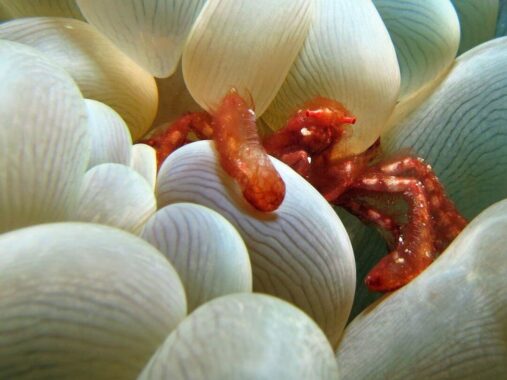
Performance:
You’re going to need a good dive camera that can keep up with you while diving. Depending on what kind of shooter and how demanding you are will determine which dive camera is best for your needs.
Many of the features that are most important to terrestrial photography, like autofocus, burst rate, and battery life, are just as crucial if not more so in underwater photography. Each camera does one of these better or worse and offers its own unique set of performance-related benefits.
The best dive cameras will have very good autofocusing systems. Visibility and contrast will be limited in water, especially when it’s cold and murky, so you’ll need all the help you can get.
Camera speed can be crucial when shooting very fast moving subjects. To capture those elusive sea critters, you’ll need a camera with high burst rates and buffering speeds, just like on dry land.
Battery life is also very important to consider when looking for the best dive camera. If your camera battery dies, you’ll have to take it out of the housing and insert a new one, which can be a tedious process especially if you’re mid-dive and have to resurface.
Your strobes will also need their own batteries, which usually come in the form of AA or AAAs. Depending on how long you’re submerged this may not be a problem but for a full days’ diving expect to change batteries at least once.
Aquatic videographers who need the best underwater camera for video may also find 4k shooting indispensable. As the current industry standard for professional video, 4k is an absolute must for many. Thankfully, many recent cameras come equipped with this tech; it’s just a matter of which ones use it best.
Lens Selection:
Lenses play an enormous role in image quality and greatly influence the nature of your photos. Depending on what kind of underwater photos you want to take and what kind of underwater housing you’re willing to invest in, you’ll have to take lenses largely into consideration.
If you’ve chosen a cheap underwater camera like a compact or point-and-shoot, then lenses play a lesser role. Since compacts come with a built-in lens already, their respective underwater housings should be designed to accommodate them (there are rare exceptions).
Compact cameras offer inferior image quality and sometimes unacceptable FOVs (fields of view) when compared to interchangeable systems. Wide angle photography and macro photography is really the way to go while diving and most compacts only do one or neither of these things well. You can invest in wet lenses, which essentially act as adapters, that add a little extra macro or wide angle capability but these are often underwhelming.
To really have full photographic control, you’ll need a camera that can change lenses. The best dive cameras have excellent wide angle or macro lens options.
Note that when using different lenses with a underwater housing, you’ll need the appropriate lens port. A lens port is, essentially, a separate housing for your lens that varies in size and shape. Since no lens is the same neither physically or optically, each lens port will be unique. Check to see if the port comes with a focus and zoom ring and if you even need these.
Wide angle lens will need a dome-shaped port to avoid vignetting and maintain proper FOV. Macro lenses generally use flat ports. Some larger lenses may need additional extensions as well.
Lens ports are made with glass or acrylic. Glass is more durable but is heavier and more expensive. Acrylic is cheap and light but is prone to scratching.
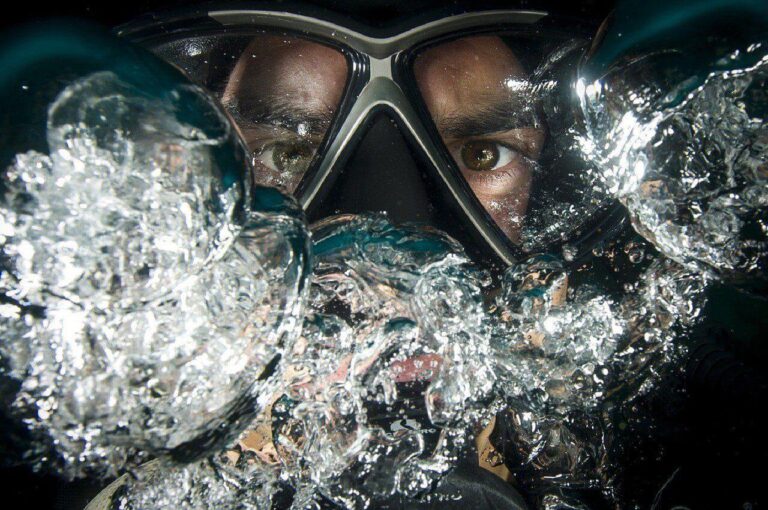
Budget:
Underwater photography is not a cheap hobby. Between the camera, lenses, and underwater housing, you could easily spend more than $1000, which is not an insignificant amount.
At the end of the day, finding the best dive camera really comes down to how much you’re willing to spend. If you’re a novice or casual hobbyist, you may find that an inexpensive underwater camera is the best thing for you. On that note, you may not even need a strong (and expensive) dive housing as you will not probably not be going anywhere near the limits of say 150 or 200 ft.
If you’re a professional with a more flexible budget, then the sky’s the limit when it comes finding the best underwater camera for photography.
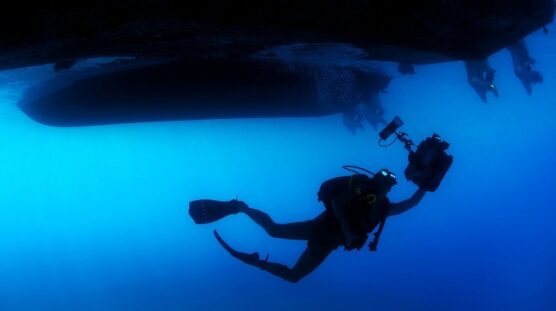
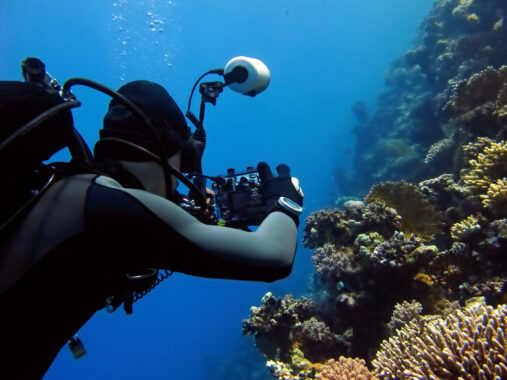
Support the Squad!
We are part of the Amazon Services LLC Associate Program. If you make a purchase on amazon after clicking a link on Diving Squad, we earn a small commission fee, at no extra cost to yourself.
We are also part of several other affiliate programs so if you click on a Diving Squad affiliate link that results in you booking a liveaboard, booking accommodation, purchasing insurance or buying a product somewhere else, once more we make a small commission, without it costing you a cent extra. Thanks!
